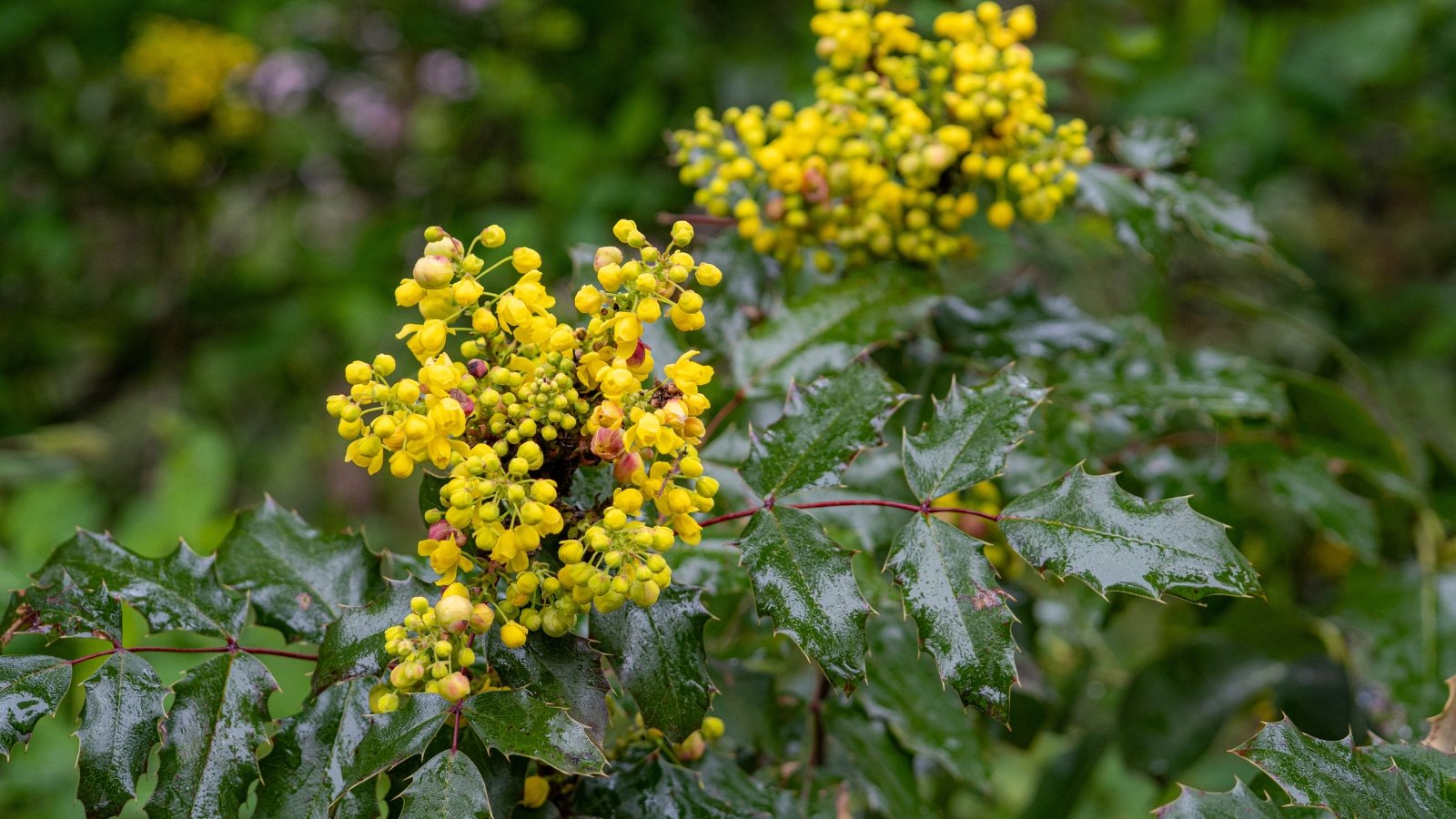California hosts mountains, beaches, coastal forests, deserts, and chaparral. This wide array of environments means the state claims thousands of native plant species with particular homes. Due to these climatic differences, southern California gardens differ greatly from northern California ones, and different regions work better for certain plants.
One example is Pacific rhododendrons. These shrubs prefer moist, cool conditions found commonly in coastal regions. Plant Pacific rhododendrons in Los Angeles, and they’ll cry out in pain under the arid conditions common to the city.
Fear not, as we’ll discuss where these California native plants live, as well as what regions they can adapt to. Whether you live in San Francisco, Lake Tahoe, or San Diego, there are California native plant species for your home garden. Let’s dive in!
Oregon Grape
Don’t let the name “Oregon” throw you off—this shrub claims most of the West Coast as its home, from northern California to British Columbia. It prefers cool, shady, and moist conditions throughout the year, although it tolerates considerable summer drought.
Gardeners in southern California should situate Oregon grapes in the shade; this allows them to be more resilient to drought than in full sun. They’ll sprout shiny red leaves in the winter that slowly mature to glossy green. Early spring finds this shrub blooming with spectacular clusters of fragrant yellow flowers.
Attract native bees, birds, and insect pollinators by planting this shrub in the shade. Gardeners above USDA zone 8 may have issues keeping this shrub happy—consider flannelbush, a drought-hardy substitute, in chaparral regions.
Western Wallflower
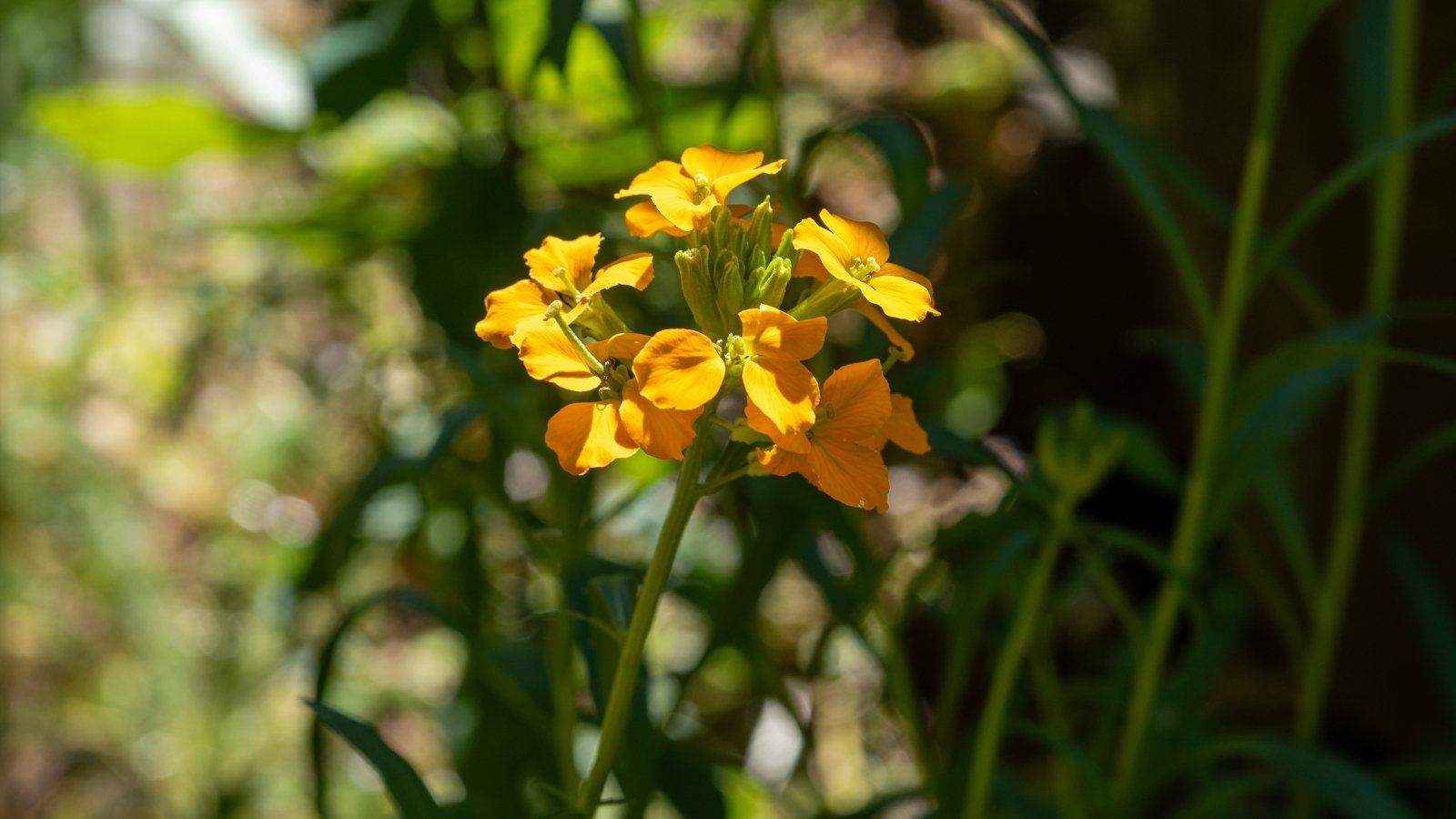
This fun wildflower varies in flower color depending on its conditions and genetics. It ranges from golden yellow to burnt orange, with some exhibiting shades between these two. A delightful perennial, western wallflower outshines other plants in sunny locales.
This perennial is for you if you have a sunny border or containers in full sun. Give it adequate drainage, moderate water when the soil dries, as well as six to eight hours of direct sunlight. It’ll reward you with fragrance, pollinators, and flowers you can cut for bouquets.
Sow seeds this spring for blooms next year. In mild winter zones above zone nine, plant wallflower seeds during fall so they pop flowers by springtime.
Yellow Monkeyflower
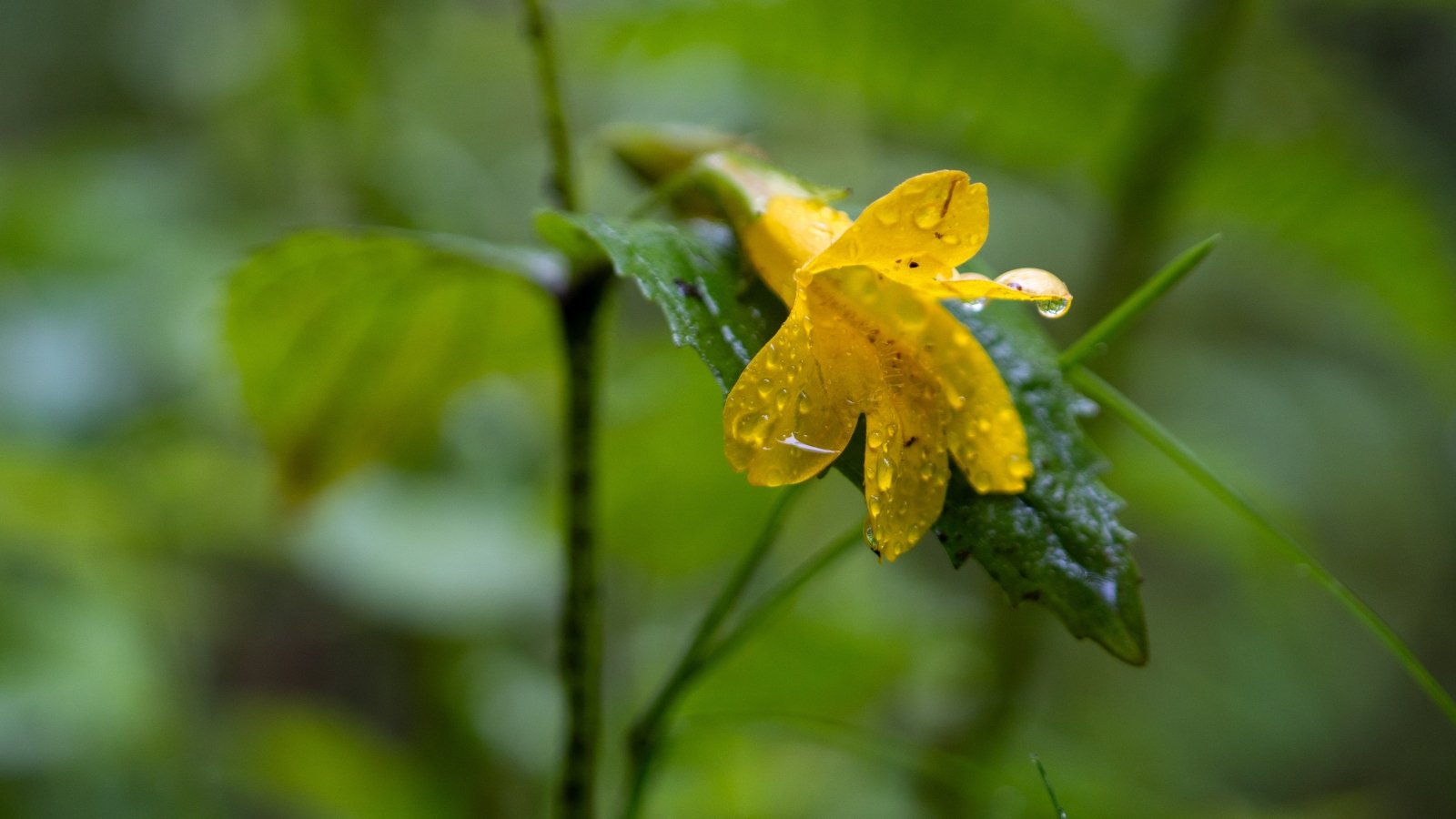
A wet shade lover, yellow monkeyflower naturally spreads by rivers, creeks, and lakes. Running water keeps its roots cool while temperatures soar—find a home in your garden with dappled shade and regular water to mimic these conditions.
Yellow monkeyflower creeps perennially, self-sowing with its seeds. Plant one of these today to have monkeyflowers forever! Limit their spread by cutting off the blooms when they’re spent or by pulling up any runners that root where you don’t want them.
Broadleaf Stonecrop
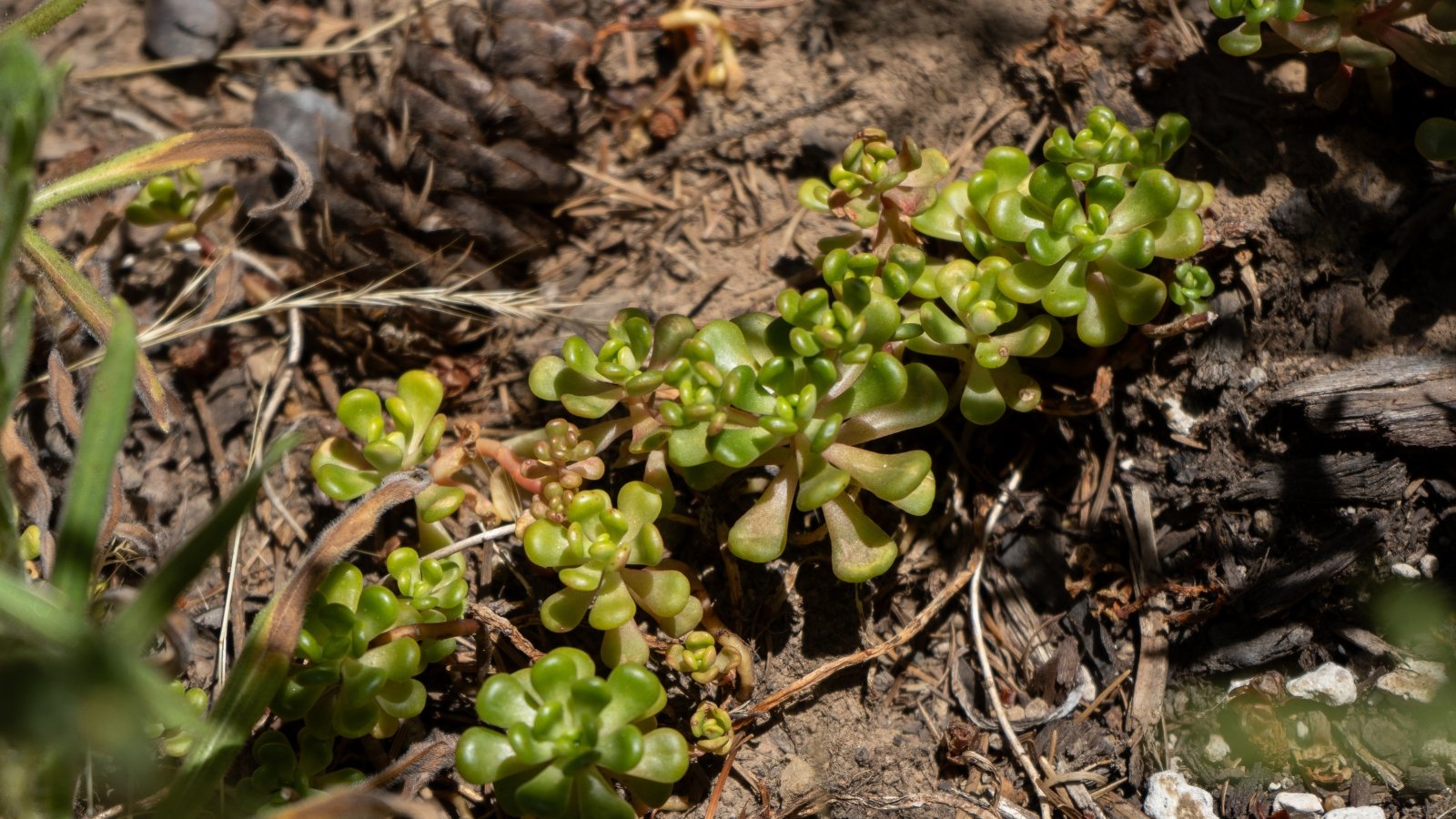
This list wouldn’t be complete without a succulent or two! Broadleaf stonecrop excels in California home gardens and is a unique native species for rock gardens with full sun exposure. Find a crack or crevice with dirt to put this sedum inside; it’ll creep each year, spilling out in maturity.
Find starts or cuttings from a friend or local native plant nursery. Broadleaf stonecrop extends roots readily with weekly watering alongside dappled shade. When the cuttings root, move them to full sun for a week or two. Transplant them once they’ve acclimated to full sun with high heat.
Two varieties of this native species sell out readily; they are ‘Cape Blanco’ and ‘Purpureum.’ ‘Cape Blanco’ is my favorite because of its tiny blue leaves with gray hues. They all flower yellow clusters in summer that pollinators flock to.
California Poppy

Every Californian should have a California poppy in their yards! It is the state’s official flower for many good reasons—it’s drought tolerant, vigorous, and sows itself. This perennial varies in flower color due to genetics. It ranges from light yellow to deep orange, with the flowers growing about two inches wide.
Plant seeds this fall in warm winter areas or in early spring where winters are freezing. Sow them directly on the ground in an open area; they’ll thrive without much additional care. Seeds may require additional irrigation if there isn’t much rain, so keep an eye on your seedlings while they germinate.
This flower’s fame precedes itself, as many breeders play with its genetics to create new cultivars. Try ‘Carmine King’ for pink-white blossoms or ‘Mikado’ for orange-red ones.
Narrowleaf Mule Ears
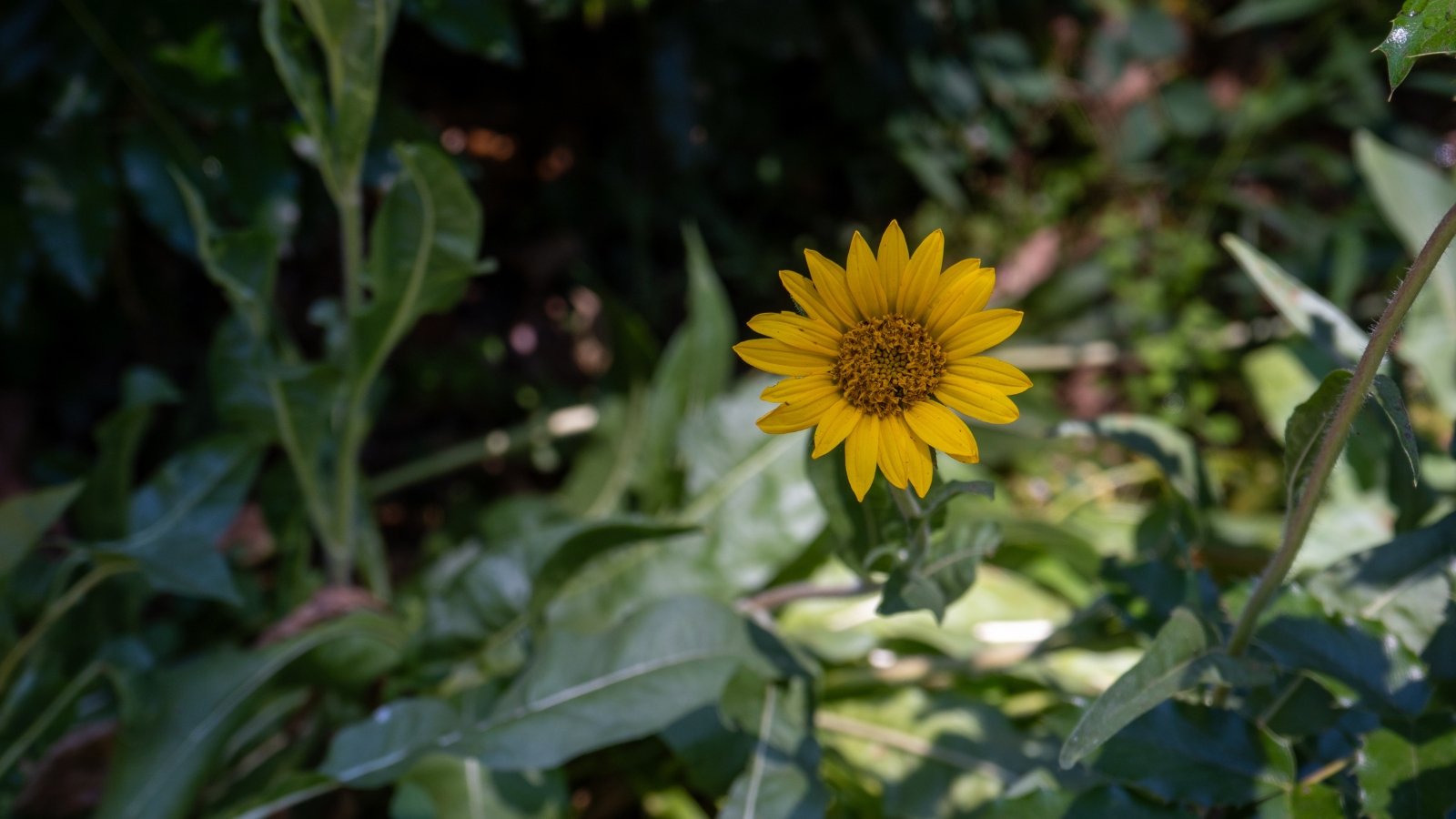
The name “narrowleaf mule ears” perfectly encompasses this perennial—it sprouts large, mule-ear-like leaves with yellow flowers in midsummer. It naturally thrives in prairie habitats, providing valuable nectar for birds and butterflies. Mule ears are centerpieces amongst native wildflowers like California poppies, common madia, and blue thimble flowers.
Fall-sow seeds where winters are mild, or spring-sow where there are hard freezes. This perennial appreciates some moisture while it establishes itself, so keep the ground moist when rainfall is low. Once established, narrowleaf mule ears tolerate drought under full sun. They might need supplemental irrigation their first year—watch for telltale signs of water stress like drooping leaves or crispy leaf edges.
Let flowers remain on the plant, or snip a few for bouquets. Their bright yellow petals with brown centers contrast beautifully alongside shiny-white yarrow umbels.
Rose Spirea
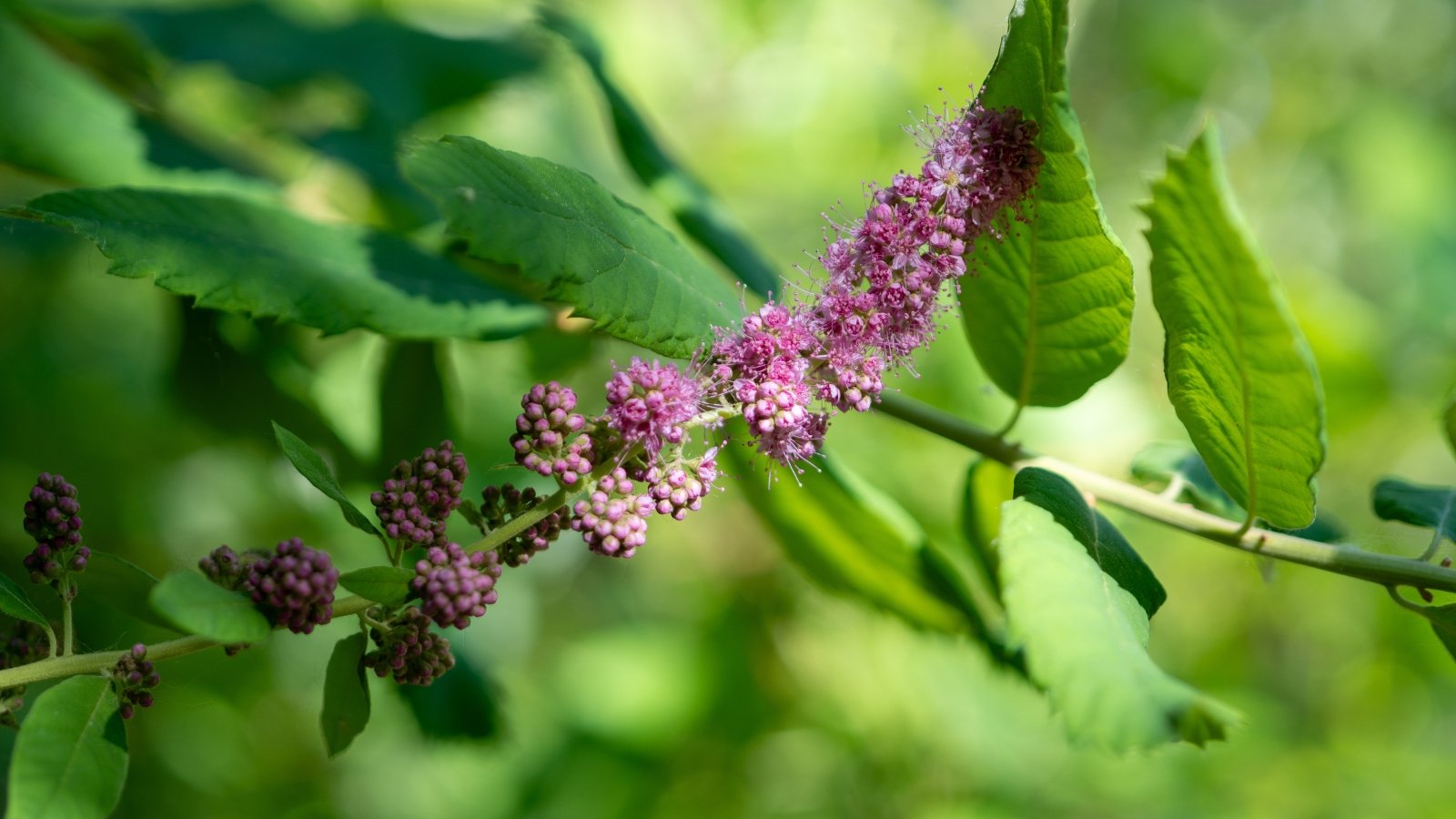
Native plants are invaluable for animal species—some animals require specific host plants to reproduce or eat, and they struggle to adapt without them. Use rose spireas instead of non-native ones; you’ll create pollinator habitats for wildlife. Rose spirea is also incredibly ornamental, with long flower spikes that are bright pink.
Give this deciduous shrub space; it reaches six feet high and wide when happy. Rose spirea naturally grows in riparian, swamp, and riverside conditions. It appreciates consistent moisture with between three to eight hours of direct sunlight. The more light it receives, the more water it’ll drink.
Rose spirea appreciates slightly acidic soil. Amend the soil before planting, or add an acidic fertilizer at transplanting. Find seeds online, or look to native plant nurseries for locally adapted specimens.
Showy Milkweed
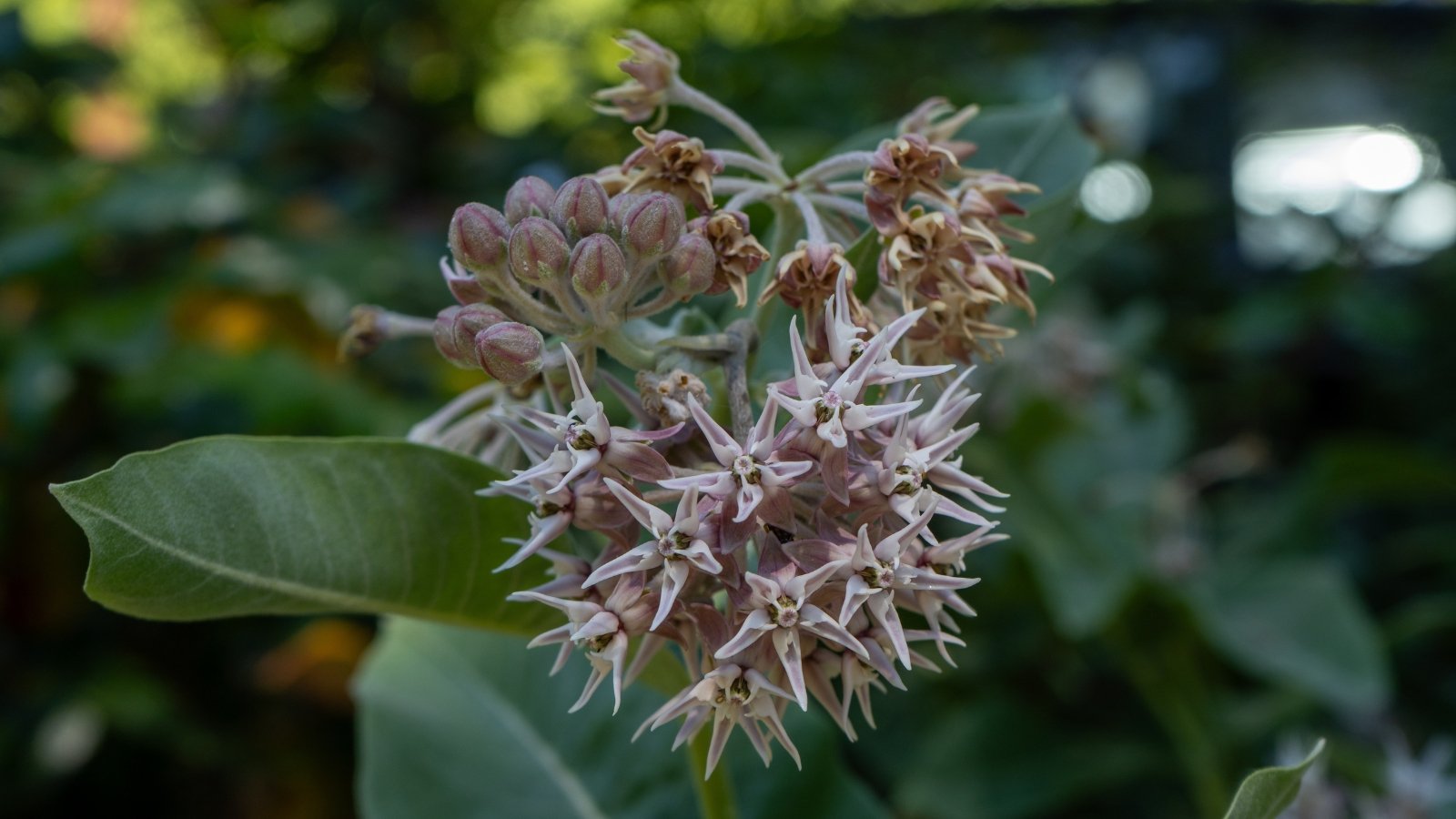
Bring Monarch butterflies to home gardens with native milkweeds. Showy milkweed is a fantastic choice with bright pink-white flower clusters. It sprouts perennially, meaning you only have to plant it once. Situate it on a sunny border alongside sunflowers, California poppies, or narrow leaf mule ears—this creates a pollinator garden for you and the bugs to enjoy!
Showy milkweed spreads with seeds or underground roots. Limit its spread by pulling up seedlings as they sprout, or, put showy milkweed where it has extra room to expand. This native milkweed needs direct sun for six to eight hours, minimal irrigation, and well-draining soil.
Sow showy milkweed seeds in the fall so they overwinter—this species needs a cold period to germinate. Where winters are freezing below zone seven, sow them two to four weeks before your last average frost date. This gives them enough of a cold period for successful germination.
Siskiyou Lewisia
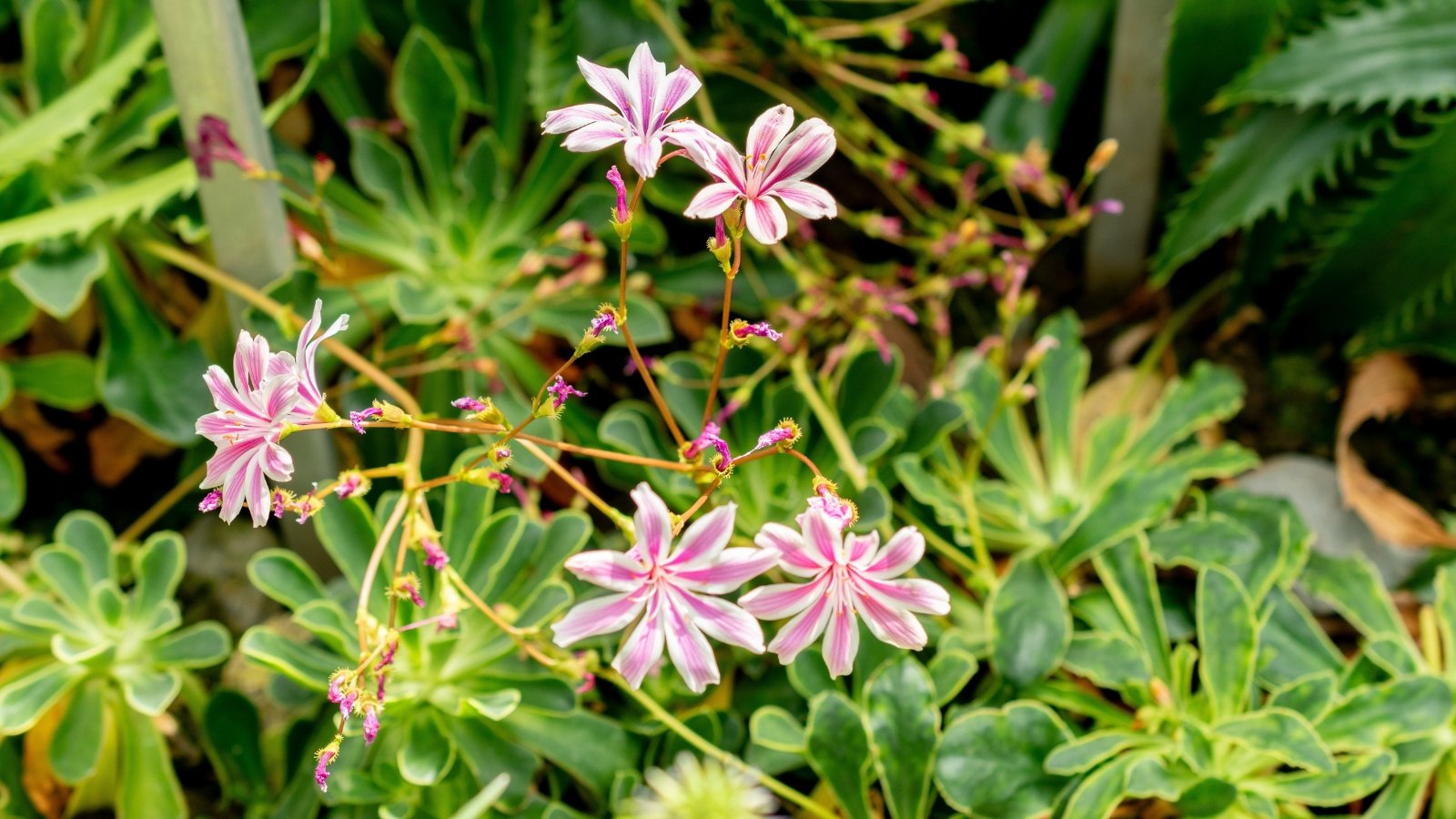
Succulent leaves with striped flowers decorate this northern California native annually. It originates from rocky outcrops and alpine areas. Mimic these conditions perfectly with rock gardens. The rocks provide cracks for the roots to sneak into, keeping them cool beneath direct sunlight.
Consider growing the native species for maximum pollinator resources. It thrives with excellent drainage, minimal irrigation, and no fertilizer. The flowers contain rich hues of orange and white. Other cultivars are pretty, like ‘Rainbow’ with orange, pink, and yellow blossoms.
Grow Siskiyou lewisia from seeds, transplants, or cuttings. Sow seeds in the fall—they’ll germinate in early spring. Transplant adult specimens when the weather is mild, either early fall or spring. Rooting cuttings is challenging but doable with the right instructions.
Coastal Hedgenettle
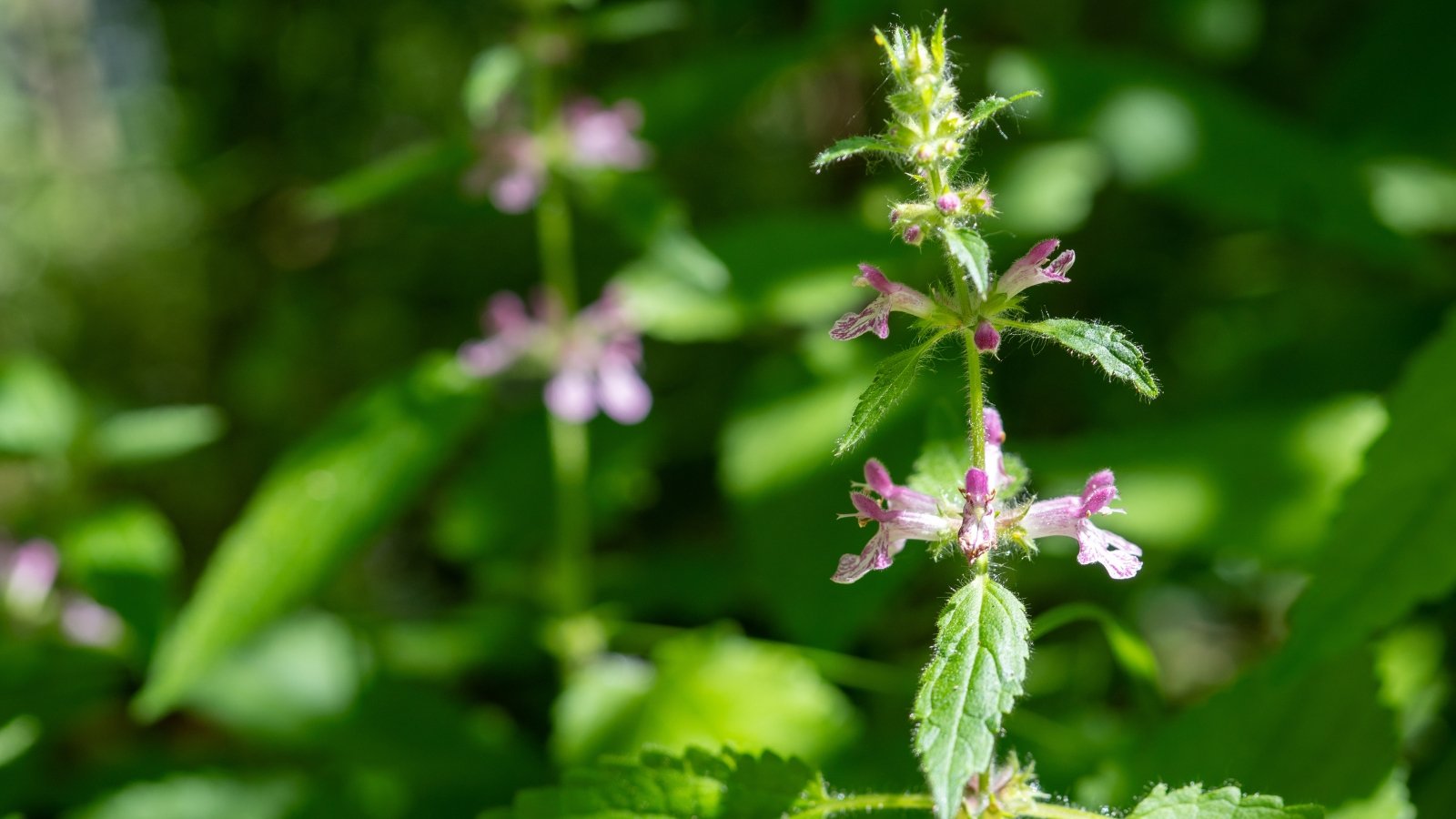
A mint relative, coastal hedgenettle roams where it pleases. Early spring finds it sprouting out of the ground. It is in full bloom by midsummer, with spikes of rose-pink flowers. The blossoms attract hummingbirds while interjecting gorgeous colors into your landscape.
Let this native herb spread, or contain it in a raised bed or container. Just like mint, it uses seeds with underground rhizomes to propagate itself. Avoid using it in tight plantings among other herbaceous perennials, as the coastal hedgenettle will quickly overrun them.
Start this hedgenettle with seeds, starts, or cuttings. Sow seeds in the fall, or keep them in your fridge for the winter and sow them during early spring. Cuttings or starts are easier—transplant them in spring or fall, then water well. Coastal hedgenettle naturally dies below the ground in winter, so don’t worry if it starts looking ragged after summer.
Twinberry
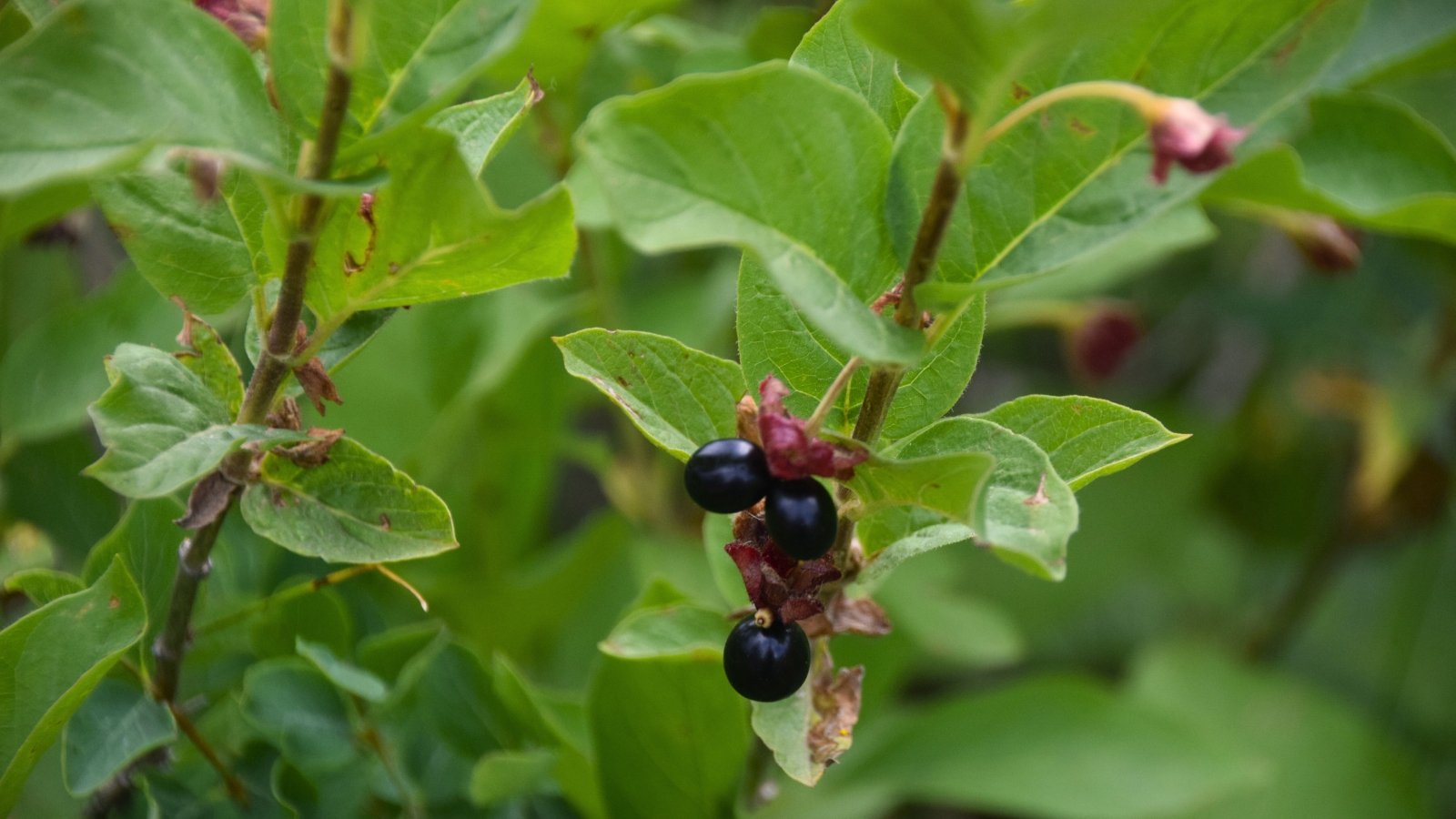
As its name suggests, twinberry grows black-purple fruits in sets of two. Behind the berries are red bracts that act as collars. This is a shrub honeysuckle with opposite green leaves. The tall, dense shrubbiness provides a wealth of habitat for birds and other critters.
Use twinberry shrubs for screens and windbreaks, or plant them as single specimens with other perennials and short shrubs surrounding them. Like other honeysuckles, twinberry appreciates regular water during spring through summer. It has a wide native range though, adapting readily to moist environments.
If you garden where it is dry, water the shrub extra for its first year whenever the soil dries. It should be more drought-tolerant in its second year. Twinberry needs less water in partial shade sites—consider planting it in dappled sunlight if you want to use less irrigation.
Large Leaf Avens
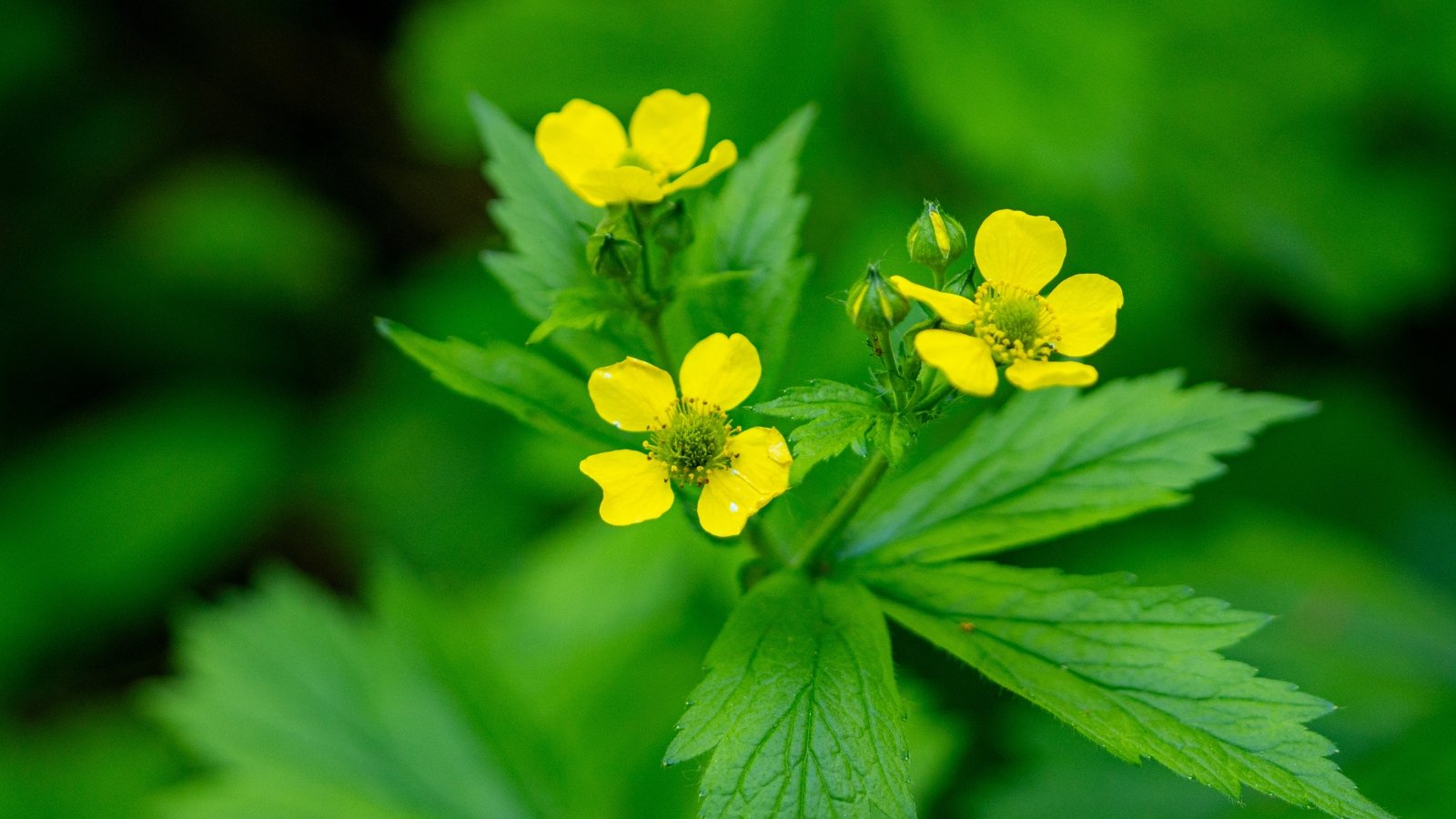
This small herb provides multiple seasons of interest. In early spring, rosettes of light green leaves sprout from perennial rhizomes. They shoot up stems up to four feet tall as the weather warms and days get longer. Then, shiny yellow flowers that resemble cinquefoil flowers sprout. After pollination, they morph into what looks like spiky little balls—they are seeds with the flower styles still attached.
Large leaf avens’ scientific name is Geum macrophyllum, a relative of other garden varieties of Geum. This species is native to the West Coast; it thrives in moist, open areas from valleys to foothills. Give it partial shade and occasional watering for best results.
Grow large leaf avens from seeds. This species doesn’t require cold stratification, so sow seeds from fall to spring on bare soil. They’ll flower and seed, then die back after seeding.
Pacific Bleeding Heart
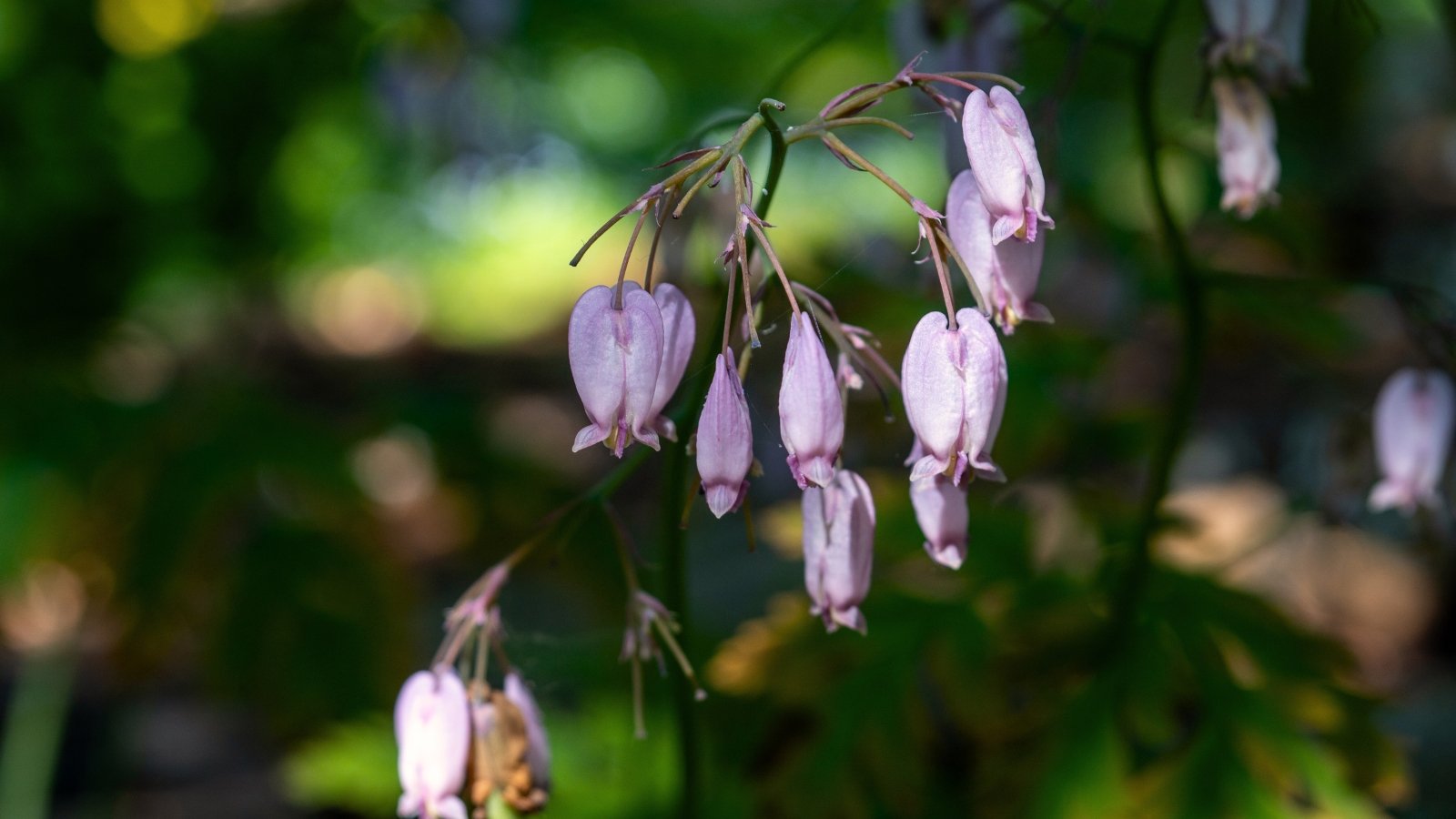
Do plants struggle in your shaded backyard? Try Pacific Bleeding Heart. This herbaceous perennial rises from rhizomes with lacey foliage and heart-shaped pendant flowers. California native pollinators love the flowers, and you’ll love the look of them! If you’d like white flowers instead of pink, try ‘Aurora’ instead.
Give this ground cover ample water, rich soil, as well as cool shade. Where winters are warm it dies after a year or two, growing as an annual. Zone nine gardeners should try to overwinter it in the coolest spot of their yard. Leave it be for the winter, then monitor it during spring to see if it survived.
Pacific bleeding heart is drought tolerant in dry shade once it establishes itself. Transplant mature plants in fall or spring, and water them once their soil dries. They naturally die below the ground during autumn, so let them do their thing!
Fireweed
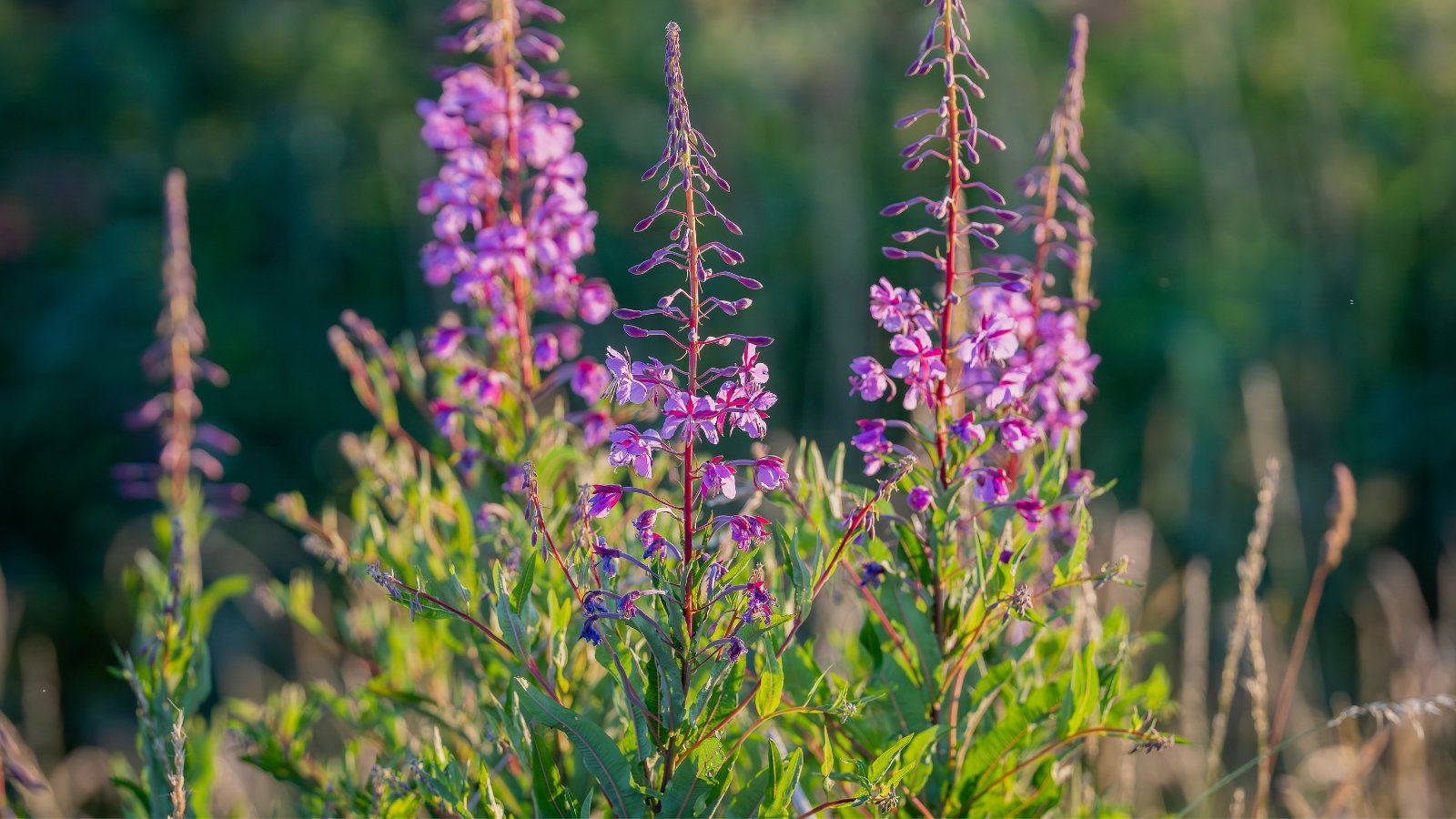
Don’t be fooled by fireweed’s name—this native perennial is no weed. It may have weedy tendencies, but it naturally grows throughout western North America. It also thrives in other regions across the globe. Fireweed gets its name from its tendency to sprout after fires; it helps initiate growth on otherwise barren land.
If you’re worried about fireweed spreading, try growing it in a container! Then, after the blooms fade, cut off the spent flowers. This prevents the seeds from spreading. Or opt to naturalize it! If you have a barren piece of dirt, surface sow seeds. Fireweed thrives on dry land, making it a low-needs species.
Early fall is the optimal time to sow seeds, although late fall or early spring work too. Water the seeds well, then leave them be. They’ll start growing when days grow longer and hotter.
Salmonberry
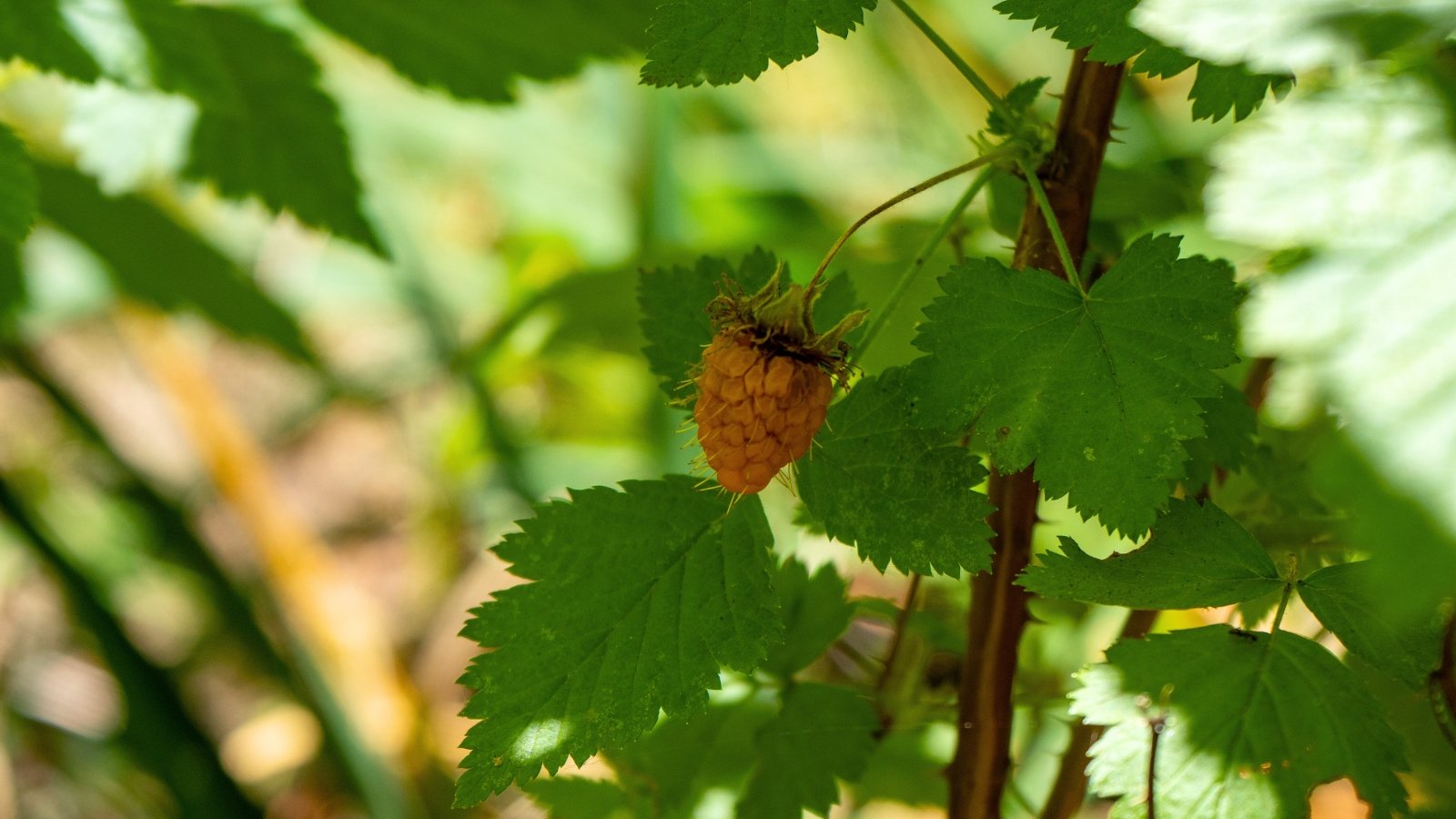
Edible berries, perennial shoots, and lush foliage make salmonberry a must-have for coastal gardens throughout northern California. Find it growing wild beneath coastal redwood forests and roadsides. I’ve seen it flourishing along the Pacific Coast Highway. Choose a shady spot for salmonberry with extra space for it to roam.
Although salmonberry is in the Rubus genus, it doesn’t have biennial canes. This means the plant flowers and fruits on the same year’s growth—it also means you can prune it after harvest without affecting next year’s crop.
Find salmonberry seeds online or at native plant retailers. Nurseries may have them or may order them for you too. Mature plants are sometimes available—transplant adult salmonberries in fall or spring, and water well.
If salmonberry grows near you, collect its ripe fruit. Mash the berries, then shake them in closed containers with water. Let the water sit, then watch the pulp and dead seeds float to the top. Strain them out, then dry the live seeds. Sow them during autumn, letting them overwinter. They’ll germinate after winter!
Western Columbine
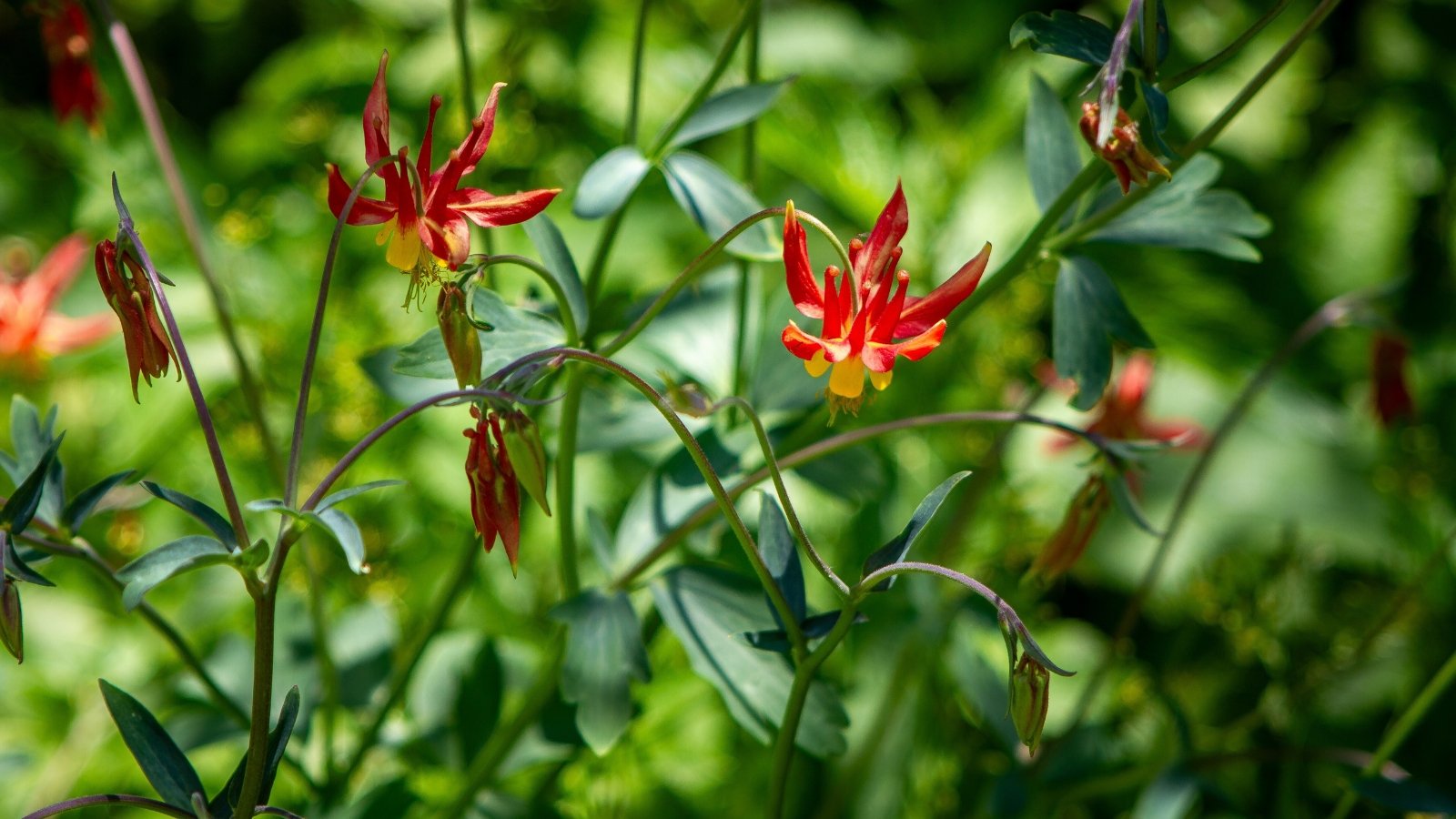
A perennial wildflower like western columbine is a treasure for gardeners, birds, and pollinators alike. A specialty of many West Coast wildflowers, it blooms bright red-yellow spurred flowers that hummingbirds drink from.
In early spring, divided lacey foliage sprouts, collecting energy from the sun. Then, the native columbine uses that energy to produce bunches of yellow-red flowers that hang down from three-foot stems. Situate the species where they receive afternoon shade during the hottest hours.
Start western columbine from seeds. Sow them in early fall in a cool spot, where they’ll cold stratify for three months. Seeds sprout with warm weather at the change of seasons.
Columbian Lily
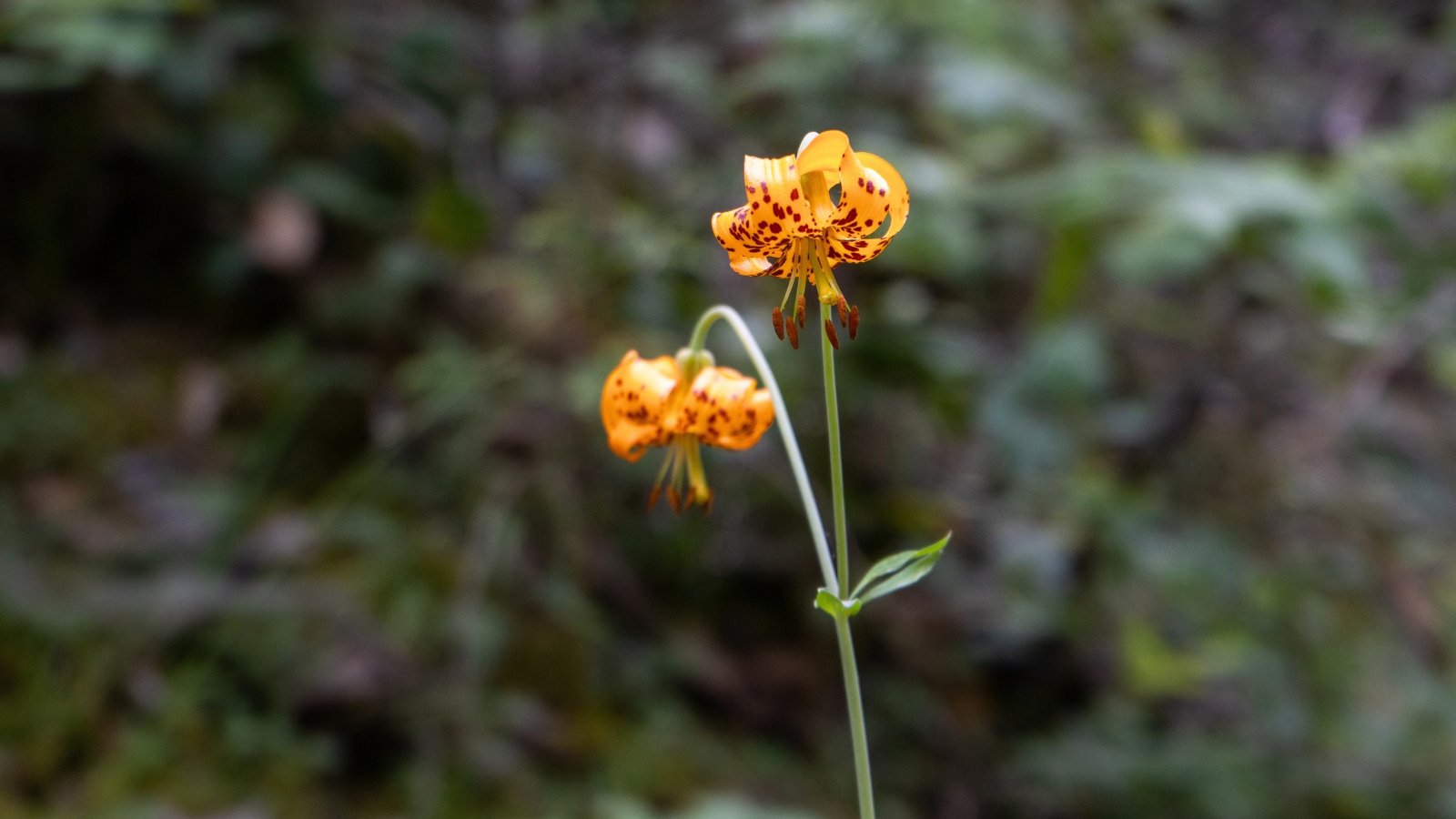
Native lilies stun backyard onlookers! Columbian lily is a winner, with orange petals dappled in brown spots. They resemble Asiatic tiger lilies but are a native species that delivers nectar to local animal populations. They naturally grow near forests, roadsides, and meadows. Spot them in midsummer by looking for their bright orange color—nothing looks quite like them!
They require a bit of care to grow from seed, so I recommend obtaining bulbs for transplanting during autumn. If you’d like to try your luck at seed sowing, obtain them online or at a local nursery. Plant seeds in the fall, then let them overwinter outside. Shoots sprout in spring; leave them be, and wait to transplant them until the following fall. Keep the transplants well watered while they’re in pots—be sure to use free-draining soil so they avoid rot.
Pacific Rhododendron
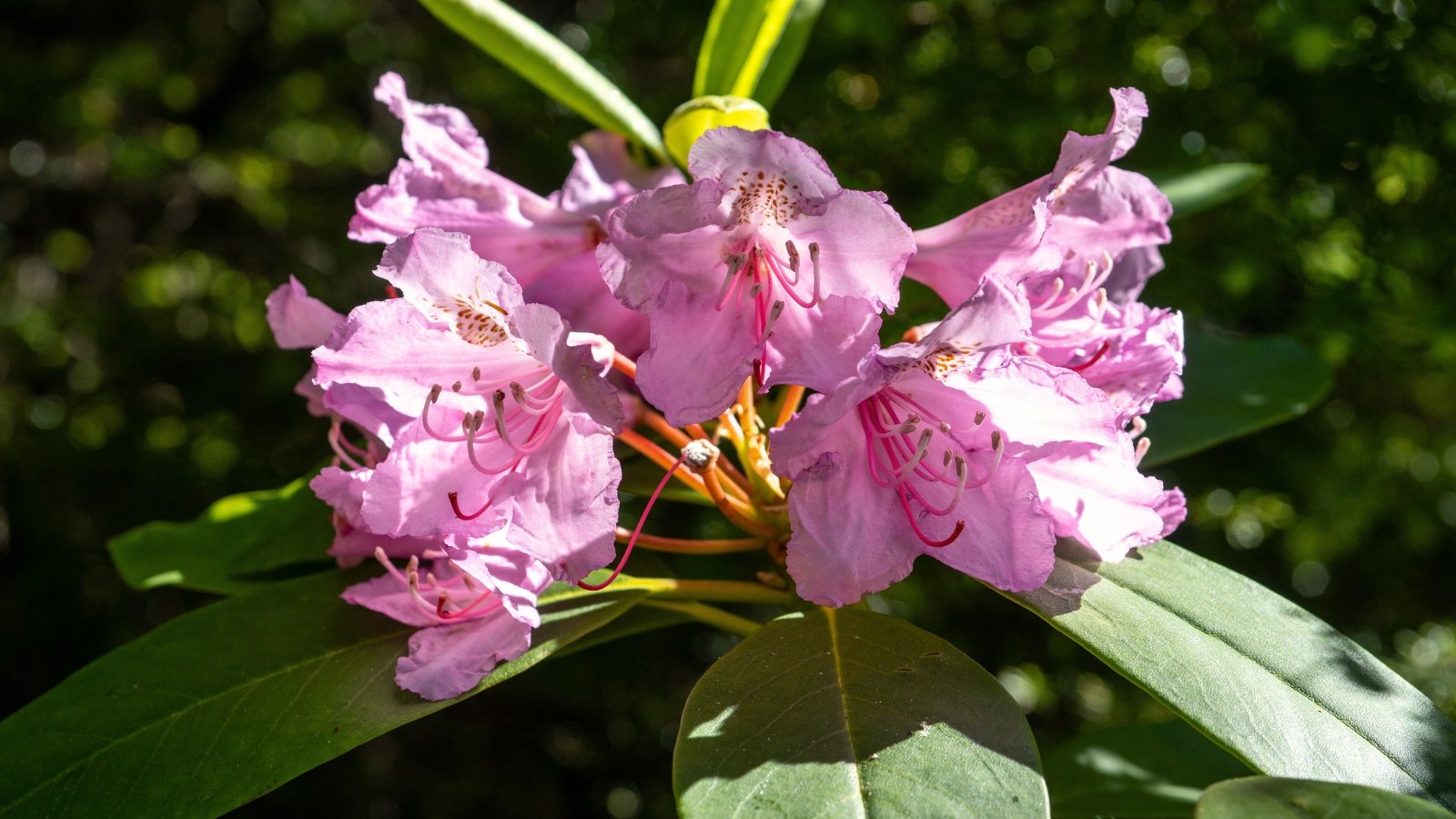
The Pacific rhododendron is the largest of California native rhododendrons. Its scientific name reflects that, having macrophyllum as the species name. This translates to big leaves, of which there are plenty on this native shrub.
Pacific rhodies appreciate good drainage, dappled sunlight, and winter moisture. Find them along the coastline or in coastal forest understories. They are slow growing but can reach heights of 25’ in maturity! Place them as a backdrop in the shade garden, with other shorter perennials in front.
Rhododendrons aren’t the easiest shrub to grow from seed, so my first recommendation is to find mature plants at nurseries or online. If you can’t find seeds, then sow them during early fall. After an overwintering period, they’ll sprout. Germination rates are typically low, so keep a close eye on your seedlings.
California Wild Rose
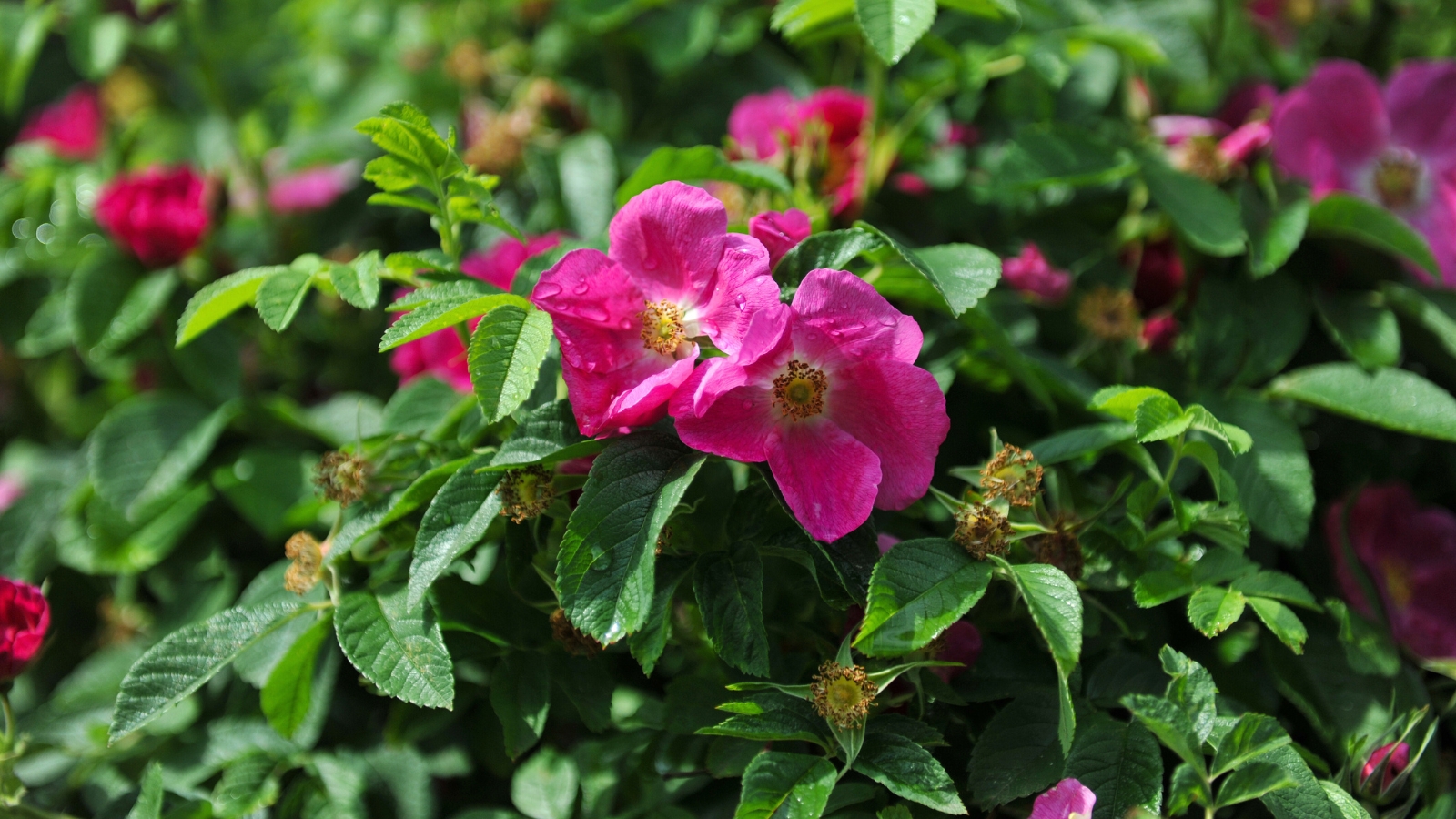
Heirloom roses are one of the gardening world’s oldest flowers—today, they’re synonymous with love, romance, and beautiful landscapes. Native roses are like heirlooms, except they’re evolutionarily older and thrive in natural settings. Try native California wild roses for hardiness, drought tolerance, and low watering needs. These shrubs typically grow on scrublands, chaparrals, and meadows. They’re adaptable and dependable; they function well in many garden settings.
This is a native rose—it’s more hardy than modern hybrids because it naturally grows in California without issue. It doesn’t need extra help; in fact, it thrives without pampering! California rose does, however, spread through suckering and seeds and quickly colonizes empty spaces. Avoid putting it with prized perennials and other low growers you’d like to protect.
Grow this native rose from seeds or starts. Sow seeds a-quarter-inch-deep in pots with free-draining soil and water well. Keep your pots where they’ll have dappled shade while they sprout. After seedlings appear with more than four mature leaflets, transplant them under four to eight hours of direct sunlight. They’ll need additional water while they establish themselves; after establishment, they’re drought-hardy.
Common Yarrow
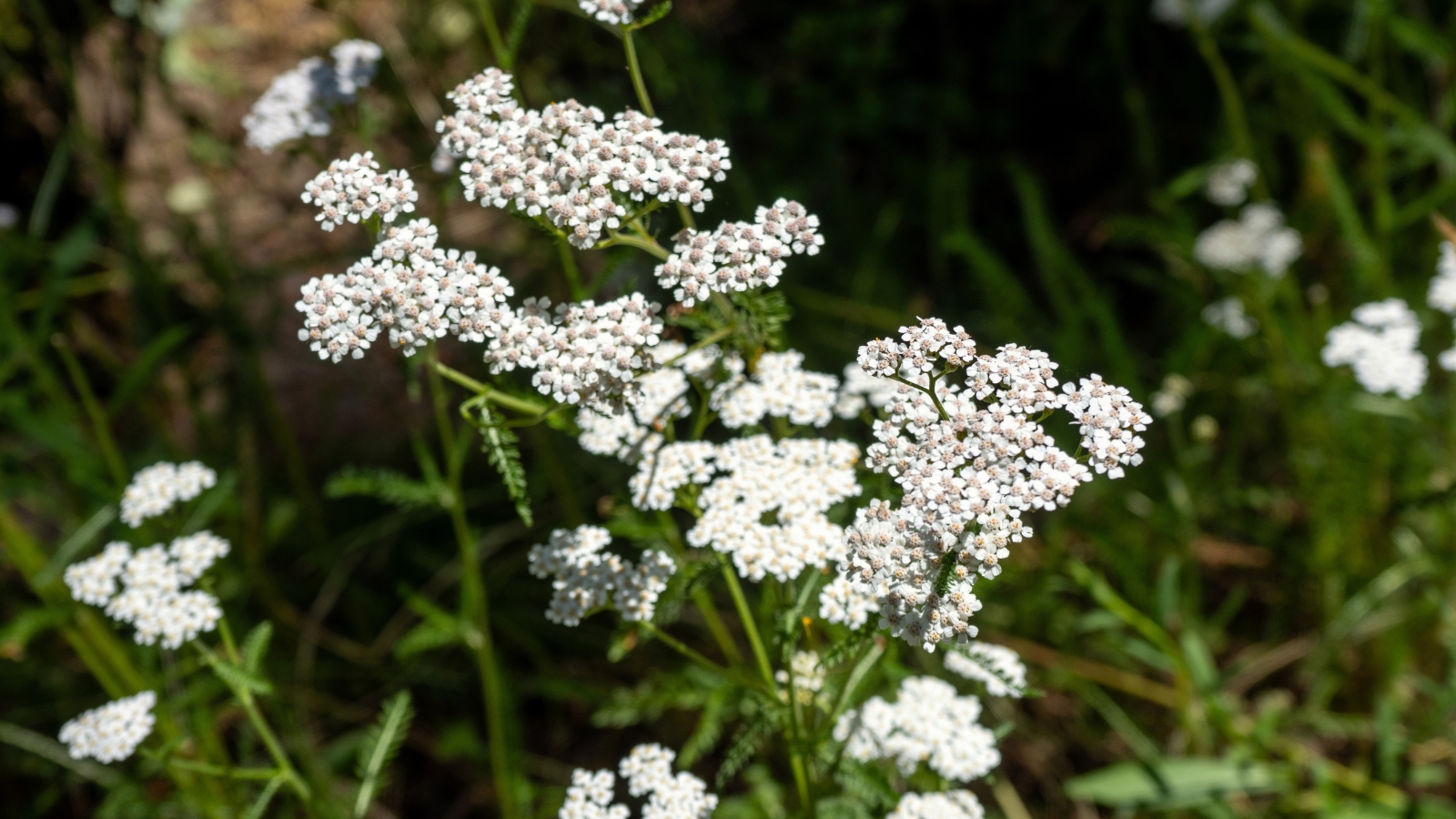
Like roses, yarrow plants and humans go way back. This native wildflower excels in many different conditions, from open meadows to forests’ edges. Its popularity translates into dozens of different colored cultivars. Find one you like, and you’ll enjoy yarrow for decades to come.
Native perennial yarrow lures pollinating bees and bugs into landscapes. Their clustered white flower pads create landing pads where bees rest, eat, and recover. These flowers also make gorgeous bouquets, both dried and fresh. Hang them upside down for two weeks, then arrange them in a dry vase. I’ve had yarrow bouquets last for over a year!
Start yarrow in home gardens by using seeds or potted plants. Nurseries often carry multiple cultivars, and sometimes they’ll have native species of Achillea millefolium. Use ‘Moonshine’ for tight flower clusters with golden yellow hues. Or, use a red and yellow type like ‘Red Velvet.’
Narrowleaf Milkweed
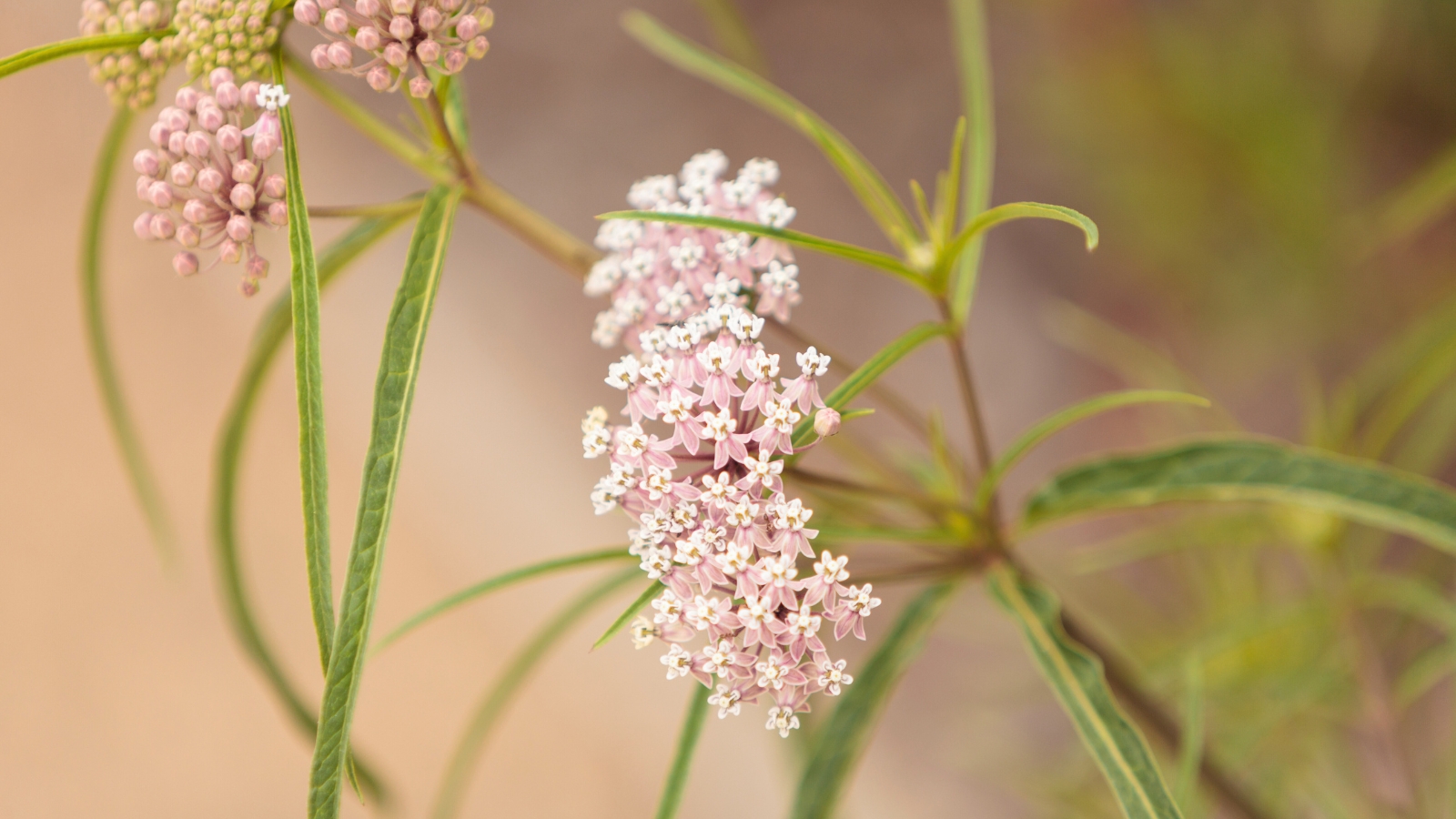
Another milkweed makes this list for fragrant blossoms and thin leaves. Narrowleaf milkweed looks great in home gardens amongst other wild perennials. Plant showy milkweed and sunflowers with this native species; they’ll all feel right at home under direct sunlight. A backyard with these species morphs into a pollinator garden for the summer before dying back for their rest during winter.
Narrowleaf milkweed occurs throughout California except in zones 11 and above. It adapts to direct sunlight or dappled shade, so long as you give this species excellent drainage. After establishment, narrowleaf milkweed tolerates long periods of summer drought. Plants may need additional water their first year—they’ll be fine in subsequent years.
Start narrowleaf milkweed from seeds or transplants. They’re both commonly available online or at local California nurseries. This native plant reseeds when happy; simply remove seedlings once they sprout and throw them back. They’ll decompose and add organic matter to your remaining milkweeds.
Woodland Strawberry
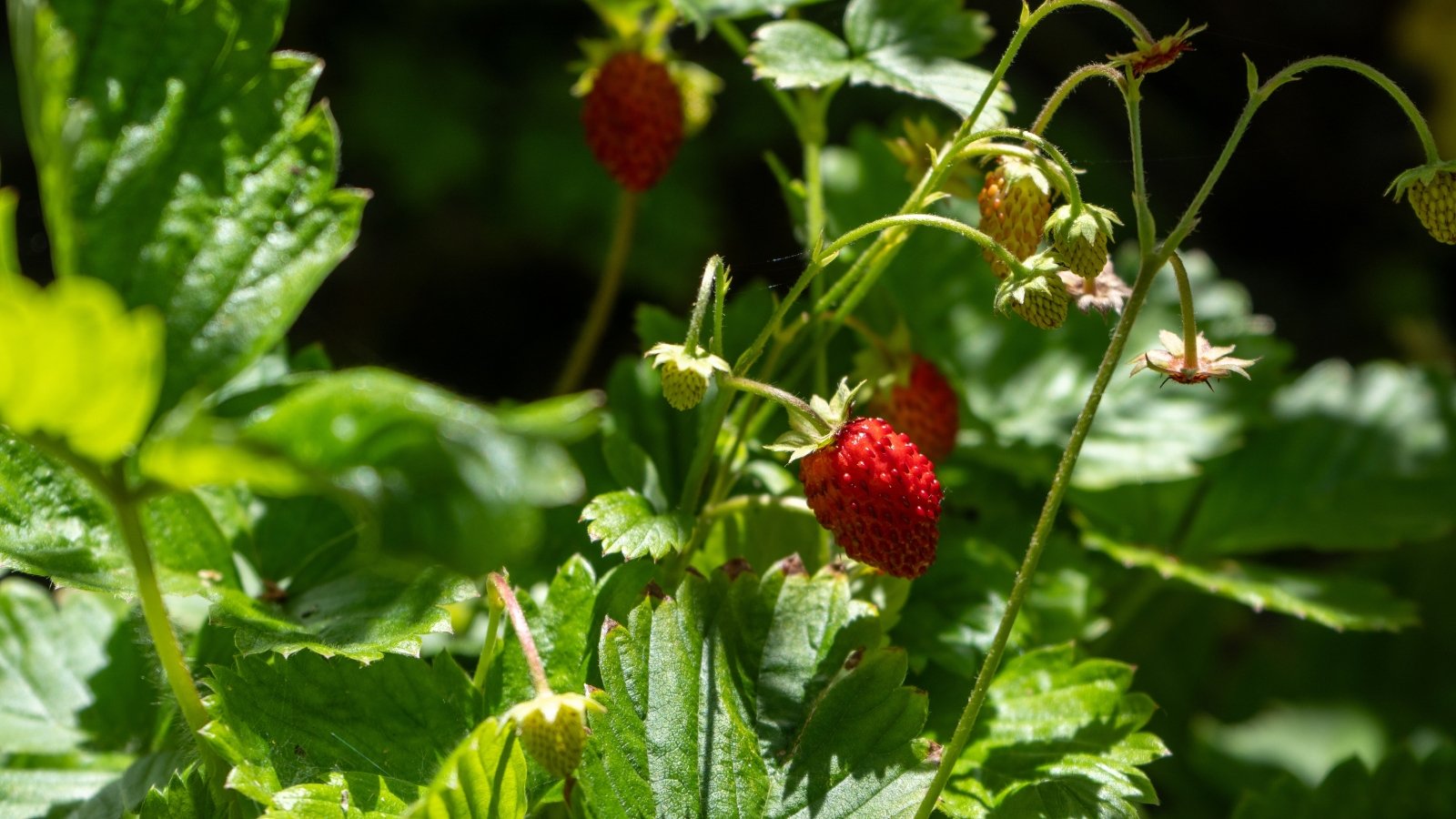
Like salmonberries, woodland strawberries create delicious fruits for your enjoyment. This species spreads less than other more common garden varieties—use woodland strawberries for borders, raised beds, or native plant gardens.
Small three-lobed leaflets sprout from a central point; by mid-spring white-yellow flowers start morphing into tiny, red strawberries. Pick them when they’re bright red, then prepare for exquisite flavor! Woodland strawberries taste completely different from grocery store strawberries. Eat them fresh, or collect a lot to make strawberry jam.
Cultivars exist with even more flavor than the native kind. ‘Mignonette’ is my favorite; I love tasting fresh, delicious strawberries that grow throughout summer. Want more color? Try ‘Red and Yellow Wonder Blend.’ You’ll harvest red and yellow strawberries all summer long.
Manroot
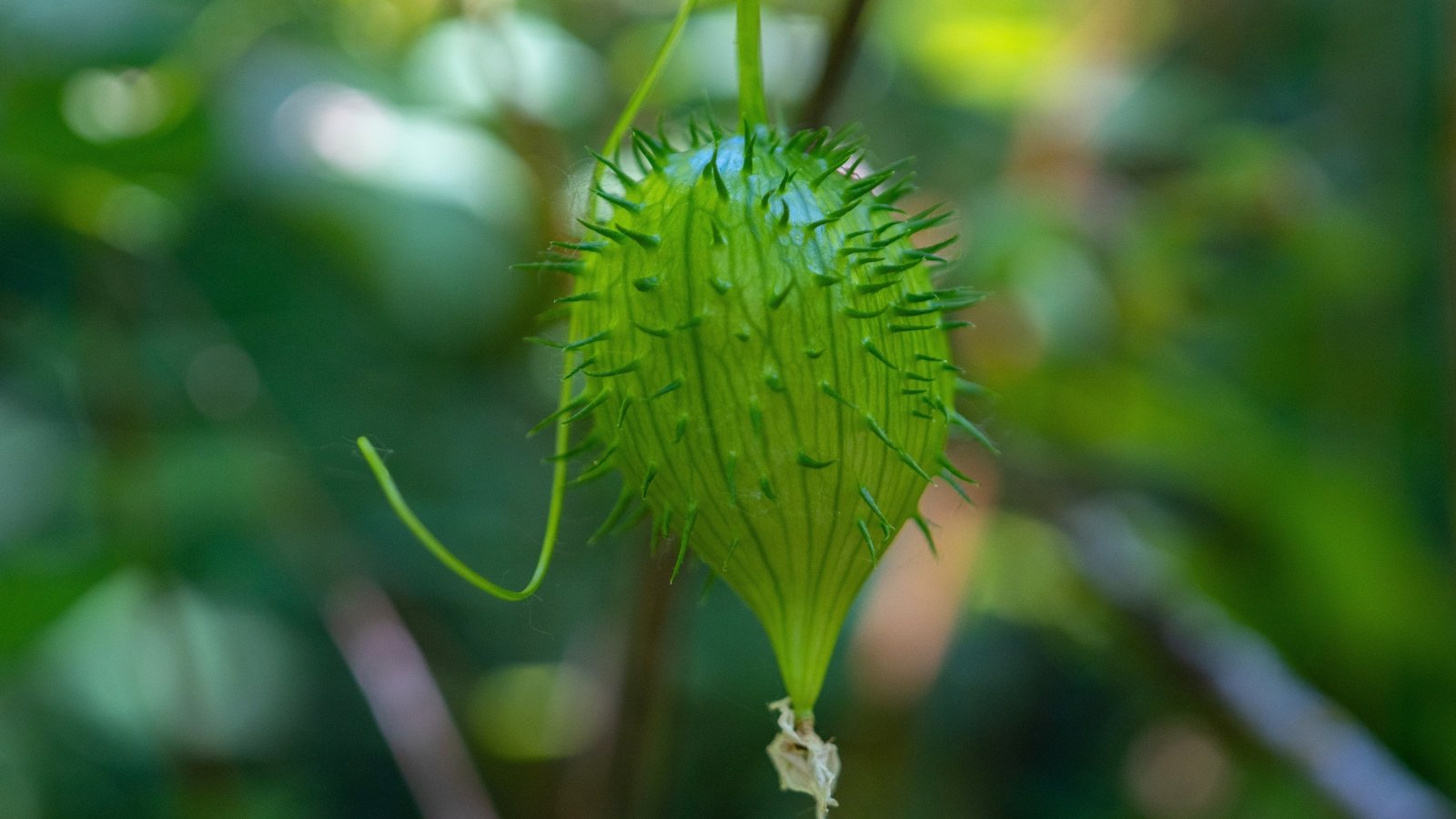
Manroots are hardy ground covers that climb trees when they have the chance. They quickly cover empty spaces or use existing plants as their structure. Avoid using manroots near edible crops or cultivating areas; they’ll overrun them, producing spiky gourds in the process! These species excel in wild plantings among tall, native trees. Contain them with trellises or arbors for ornamental effect.
Several species of manroot thrive in California. Marah oreganus works best in northern California with wet, moist conditions. Throughout the state, Marah fabaceus thrives under dry, hot summers and cool, moist winters. Known as California manroot, this species is the one to use for large home gardens.
Start manroots from seeds. Plant during autumn, watering your seeds well. Let rainwater them thereafter. California manroot grows throughout winter in warm zones, then dies back by summer. Coastal manroot Marah oreganus sprouts in spring before dying back in late summer.
Lacy Phacelia
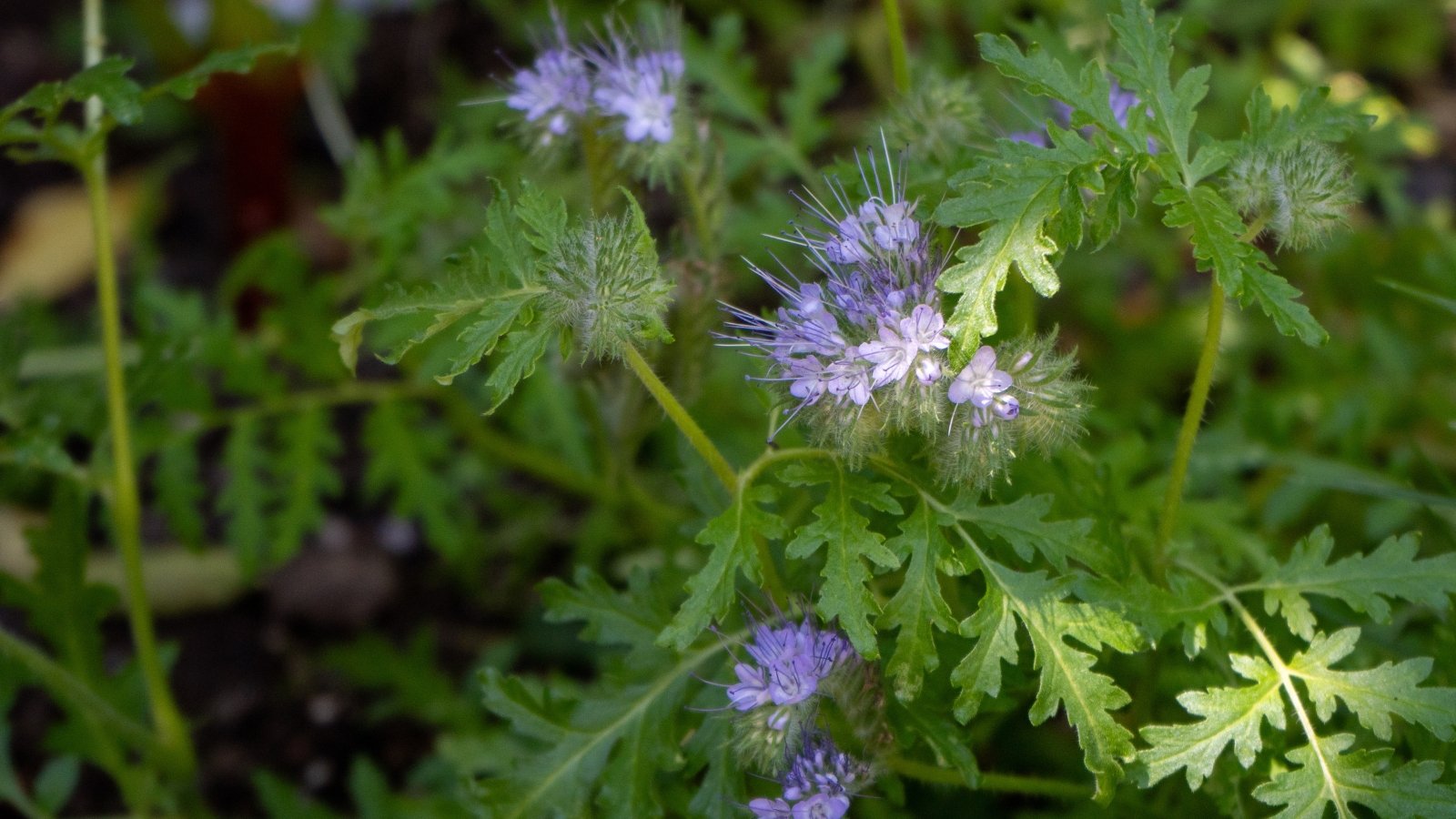
Reseeding native annuals delight home gardens for their ease of use. You’ll never have to worry about watering, fussing, or transplanting these beauties. Lacy phacelia is wonderful for these reasons—find California populations sprouting in fall for winter to spring growth. Colder areas of northern California should treat this native annual as a spring-through-fall grower, sowing seeds after your last average frost date.
Draw pollinating bugs into borders, raised beds, or natural plantings with lacy phacelia. Purple-white flowers bloom when happy—they evolve into seeds by the season’s end. Let plants reseed so you’ll enjoy them year after year.
Lacy phacelia easily grows with rich soil, regular water, and light. They’ll sometimes grow okay with shade but prefer direct sunlight. If they grow in summer with temperatures above 90°F (32°C), they’ll benefit from afternoon shade.
Western Spring Beauty
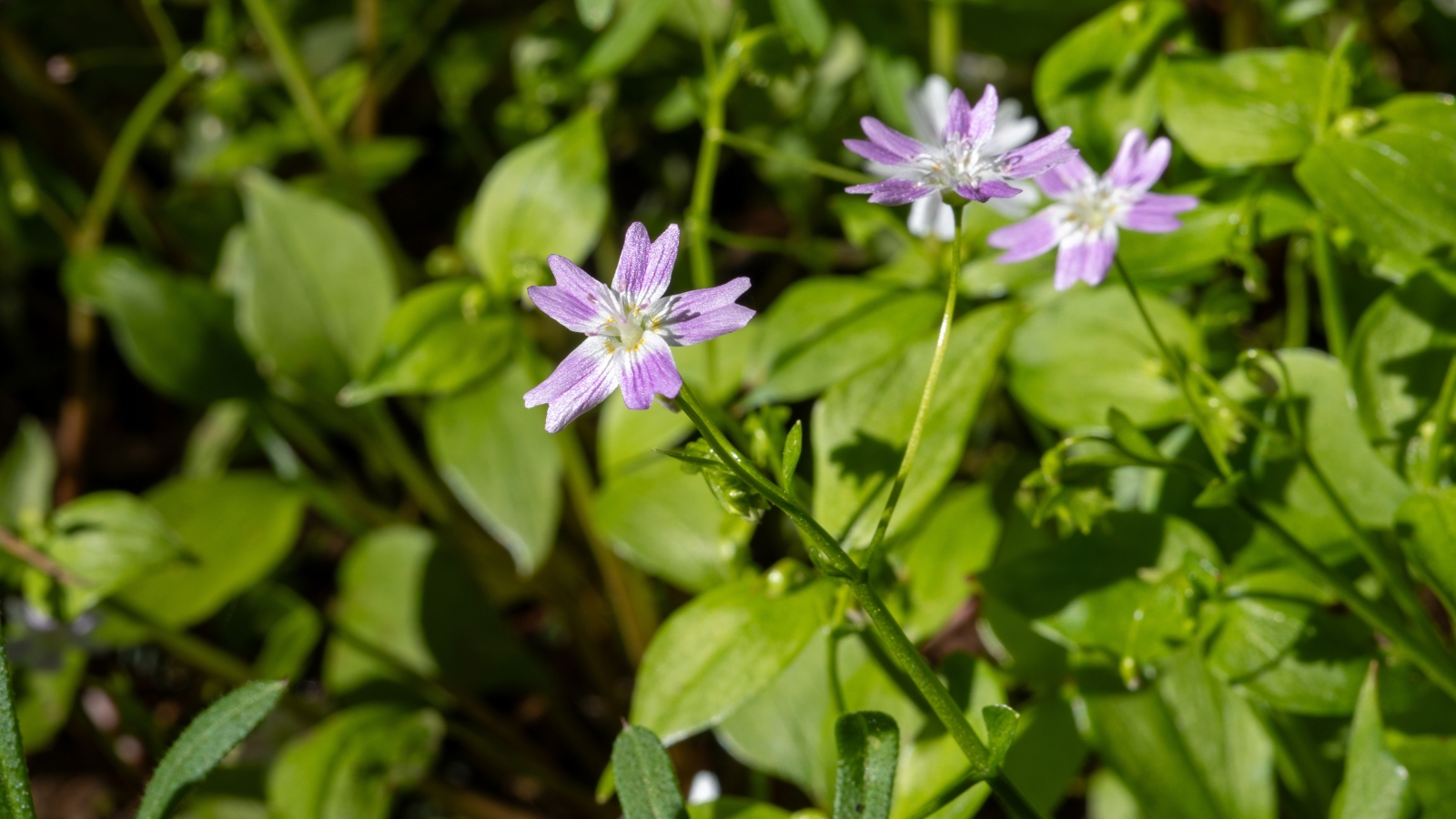
Native from the foothills up through alpine areas of California, western spring beauty welcomes warmth with bright, candy-striped blossoms. Pink-white, its flowers shine amongst its glossy foliage during early spring. Where snowmelt occurs, western spring beauty sprouts perennially; excess snowmelt provides lots of moisture for quick growth.
Short-lived, western spring beauty dies back with hot, dry temperatures. Tubers belowground hold nutrients in wait for next season’s cool, wet climate. Fall-sow spring beauty seeds—they’ll overwinter, providing clusters of low-growing blossoms next year. Watch for them near alpine, foothill, and sagebrush ecosystems. They’re becoming rarer, so it’s an even better idea to plant them inside home gardens!
Surface sow seeds during late fall. If you lack winter rains, irrigate seeds every two weeks while temperatures are cool. They sprout when nights warm alongside days growing longer. When happy, this California native plant stands out within pollinator gardens!
Lance Selfheal
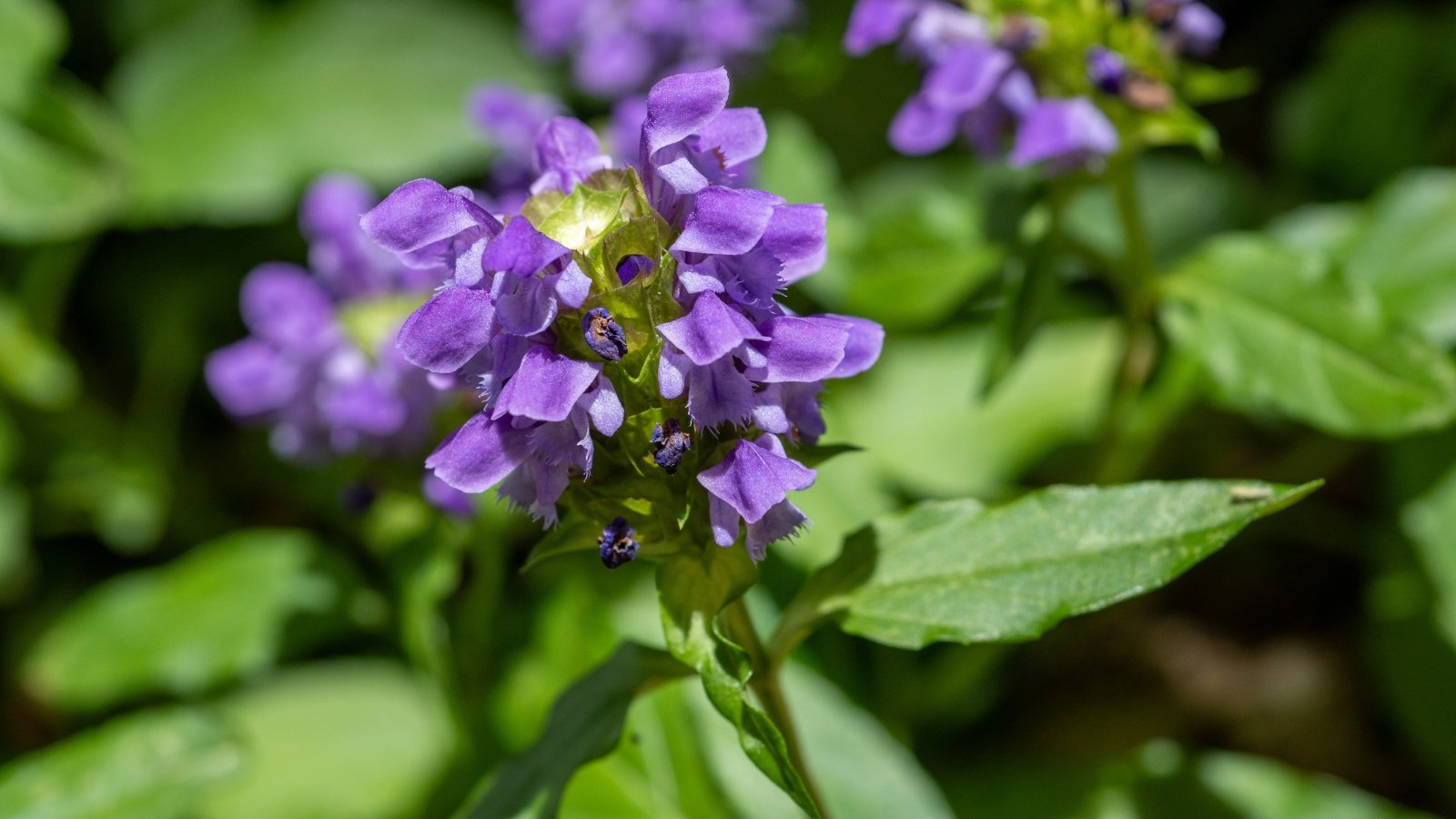
Another plant with lance-shaped leaves is lance selfheal. Both western spring beauty and lance selfheal share the Latin species name lanceolata, meaning “lance-shaped.” Like the weedy European selfheal, lance selfheal spreads with underground roots, rooting stems, and seeds. The native species behaves tidier than the non-native one and provides beneficial nectar and pollen for native animal species.
Purple flowers emerge from green flower spikes, creating a gorgeous contrast. This spreader appreciates rock garden cultures. Give adequate drainage and regular water for growing success. I grow my lance selfheal under dappled shade conditions with weekly waterings.
Start lance selfheal from seeds or starts. Plant either during fall, letting them overwinter. They’ll take off in winter or spring with rainwater and sunlight.
Starry False Solomon’s Seal
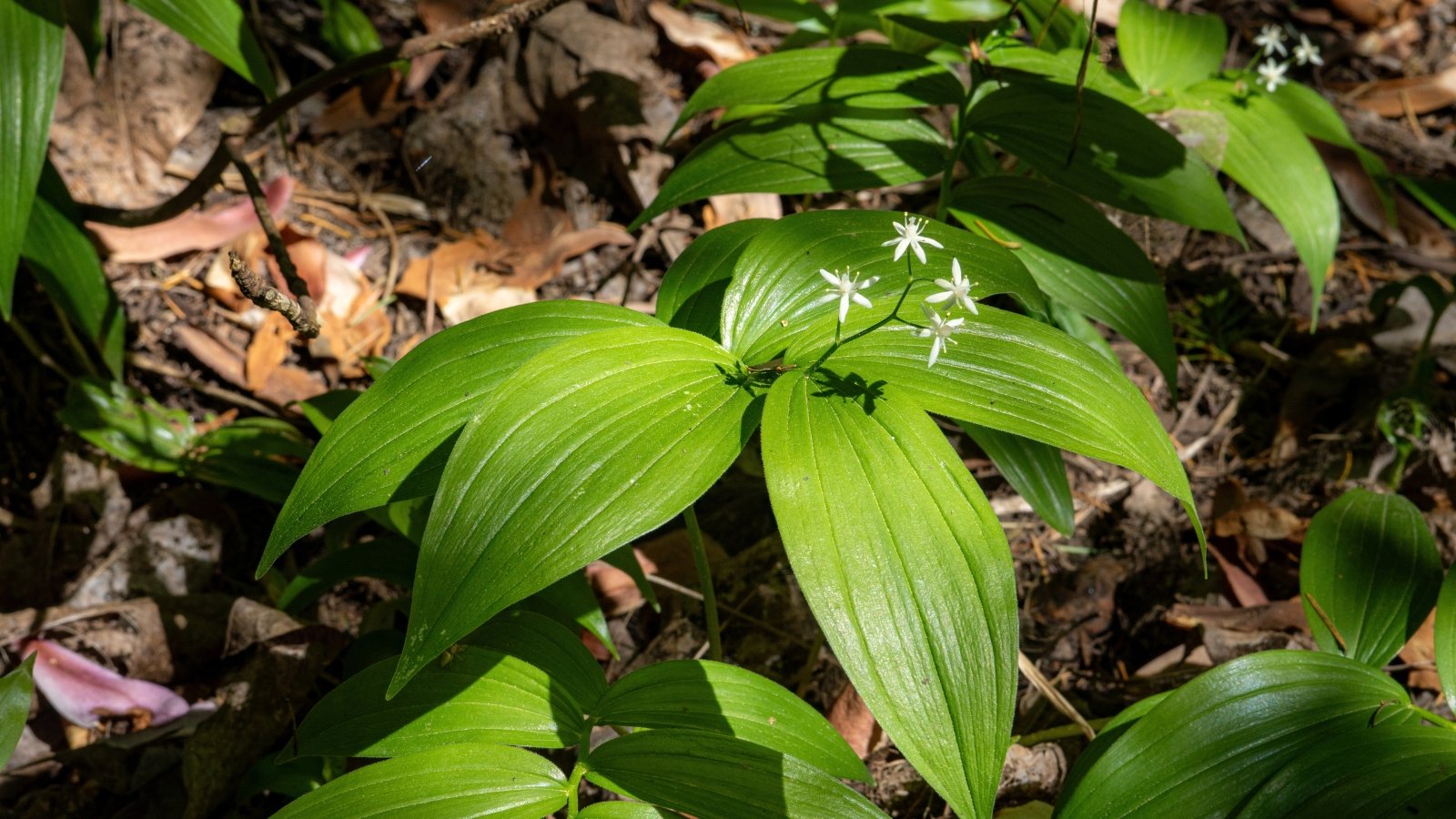
Got shade? This shade-loving perennial grows easily within moist, understory gardens. Native to large swaths of North America, starry false Solomon’s seal finds itself right at home alongside other native perennials.
Long, lily-like leaves sprout from green stems in early spring. By summer, white flower clusters shaped like stars erupt, attracting bugs and birds. Dark purple-black berries form at summer’s end. When cold or excessively hot temperatures arrive, starry false Solomon’s seal dies back until next year.
Grow this native species as a ground cover in shady areas for best results. Give regular water while it establishes itself. Afterward, starry false Solomon’s seal is dry shade tolerant. Start this perennial from seeds or starts—do this when climates are mild, during fall, winter, or early spring.
Thimbleberry
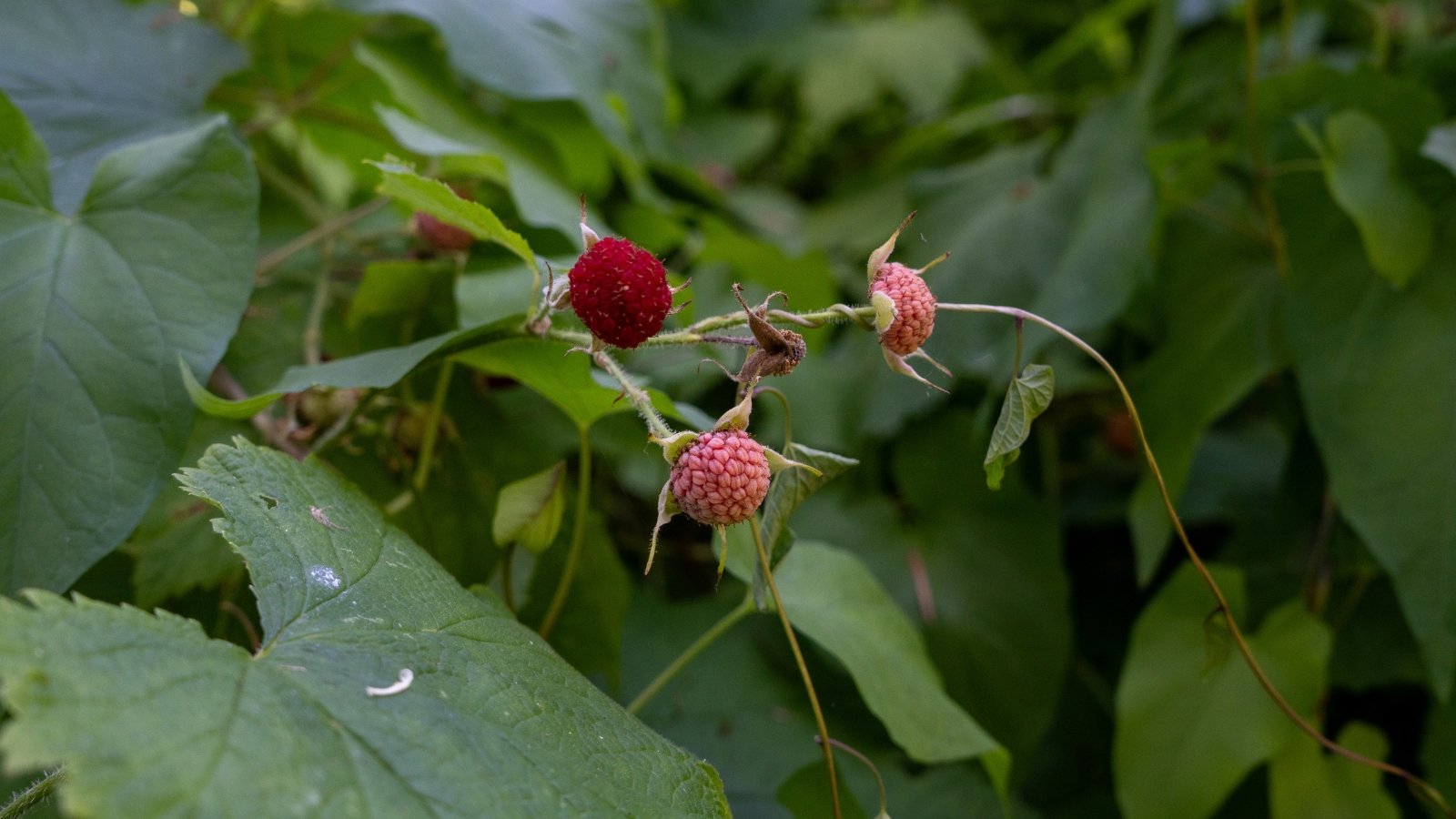
Another edible native plant, thimbleberry tastes the sweetest of most berries. They crush easily, making finding these fruits at grocery stores impossible. The solution? Grow them yourself! Thimbleberries are like a mix between raspberries and strawberries with tiny seeds. The shrubs grow large, maple-like leaves and woody stems without spikes.
Thimbleberry naturally thrives beneath forest edges and roadsides, where grounds are moist but not soggy, organically rich, and free-draining. Situate the bramble with space to roam. Spreading underground each year through rhizomes, it’ll quickly claim empty home garden space as its own.
Start thimbleberry in your landscape by obtaining mature potted plants or dormant rhizomes. Transplant in fall or spring, watering well while they get used to their new home. Perennial, thimbleberry rewards you annually with fresh fruit for eating or preserving.
Blue Dicks
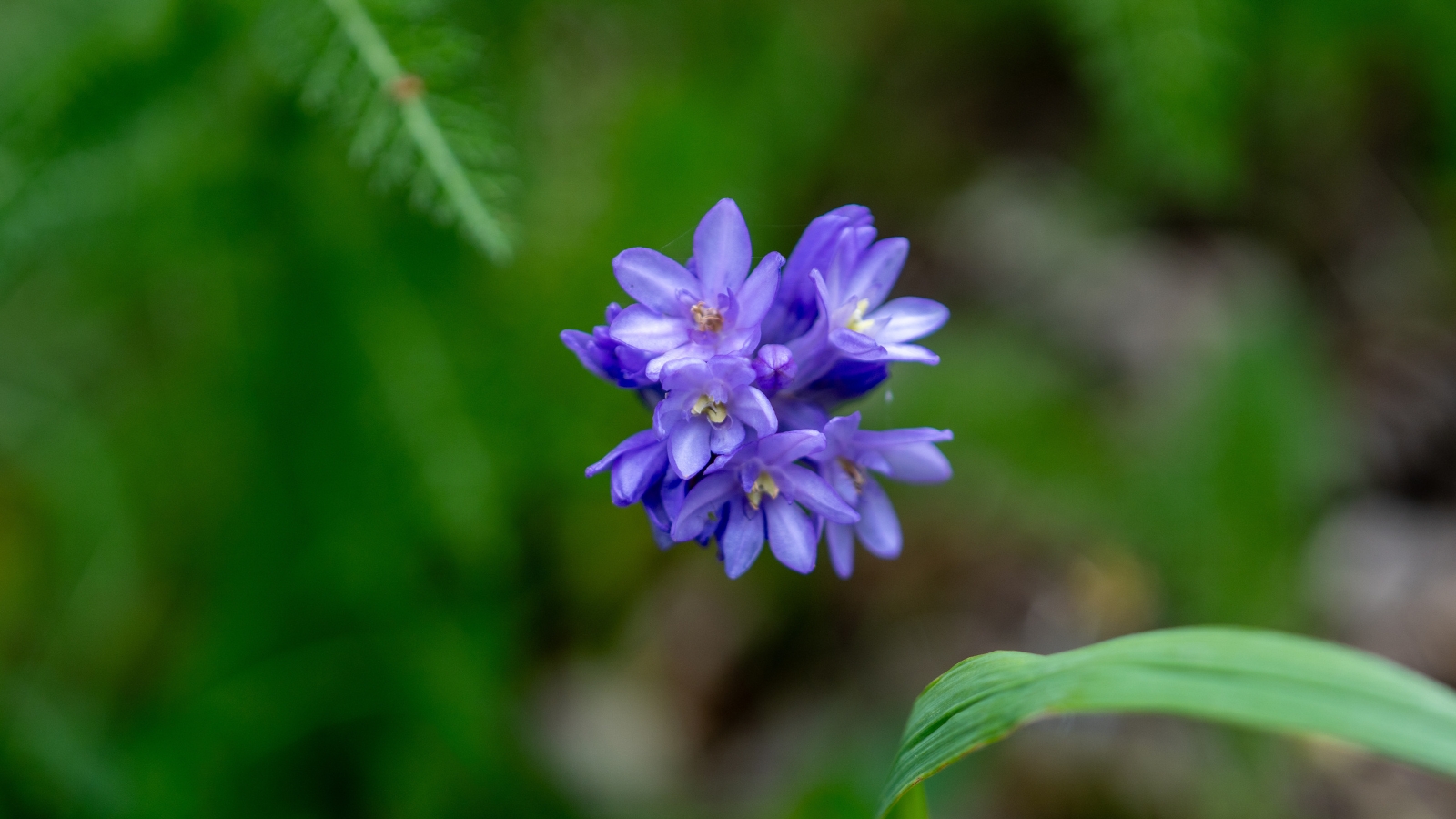
Tying up this list is blue dicks, a little perennial that sprouts from corms. Charming spring ephemerals are hard to come by—this native plant doesn’t disappoint! Find this Dichelostemma species thriving in coastal, forest, and chaparral habitats. Each year corms spread underground, forming little clumps of blue dicks.
Choose a sunny or partially shady location in your home garden for this California native plant. It does well without additional irrigation. In its native habitat, blue dicks receive winter or spring rains. Then, they flower before summer droughts arrive. Situate them away from sprinklers or lawns, and they’ll reward you with annual purple-pink flower clusters.
Start blue dicks from corms, as seeds take many years to grow into flowering adults. Acquire corms online or at California native plant nurseries near you. Transplant them during the rainy seasons whenever they occur in your area. By spring, you’ll start seeing clusters of gorgeous blooms.
Key Takeaways
- California native plants prefer natural growing conditions. Try mimicking their ecosystems in your home garden for best results.
- Native plants often prefer less water than non-native garden ornamentals in their native range.
- Planting your region’s native plant species encourages native animal species to return to lost habitats. Plant them for your sake and the environment’s.
- The easiest plant with the widest native range on this list is common yarrow. Try it first and gain momentum to plant other native species!

